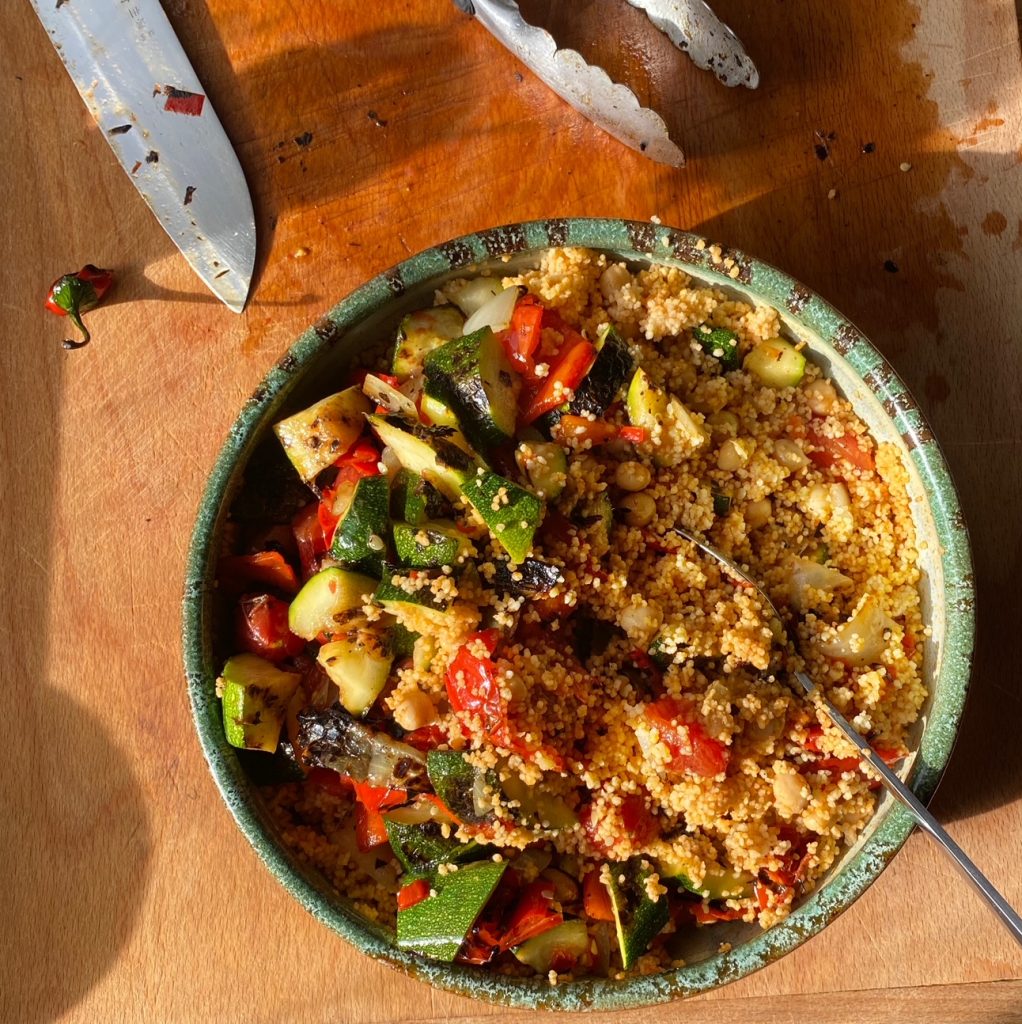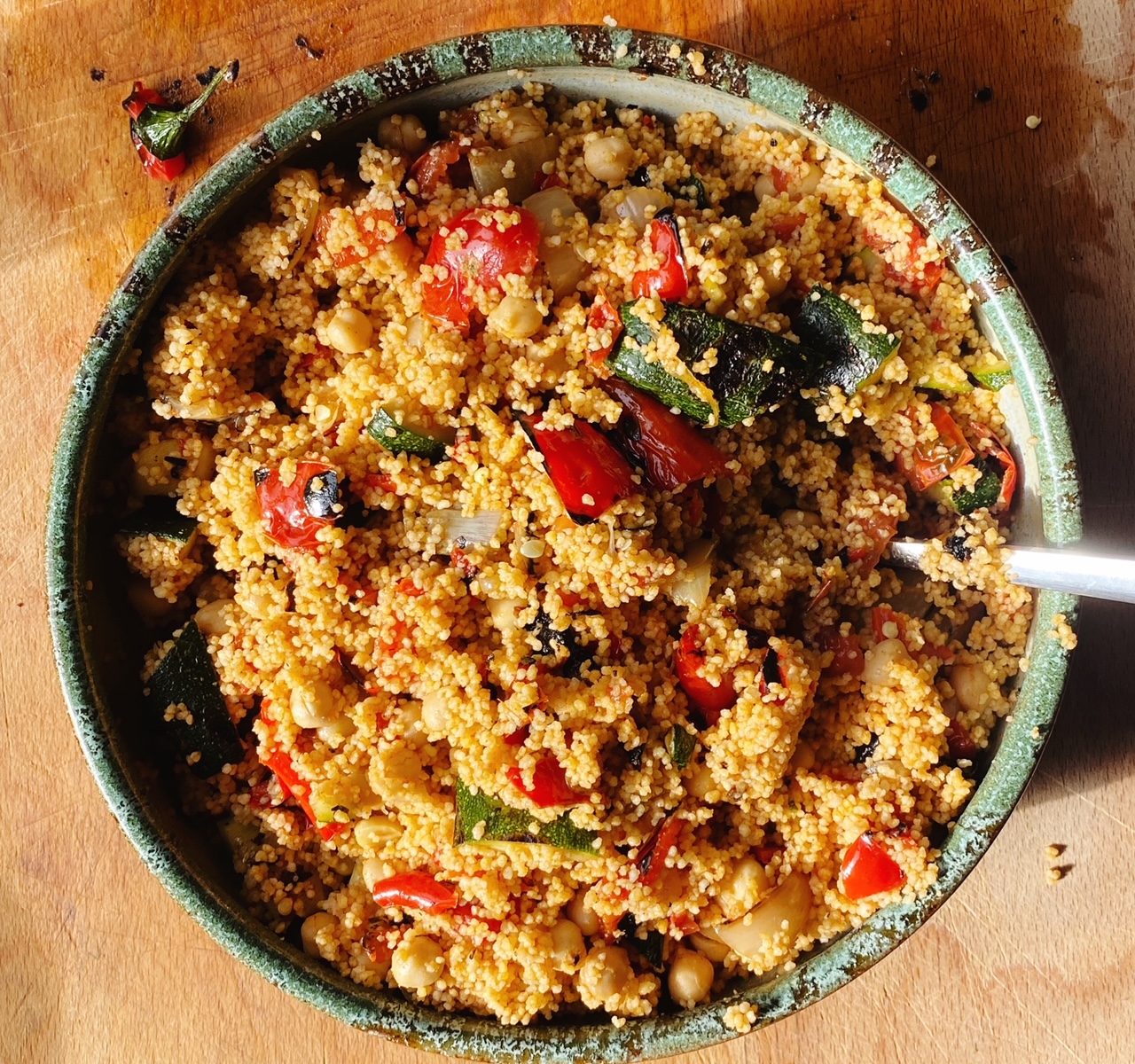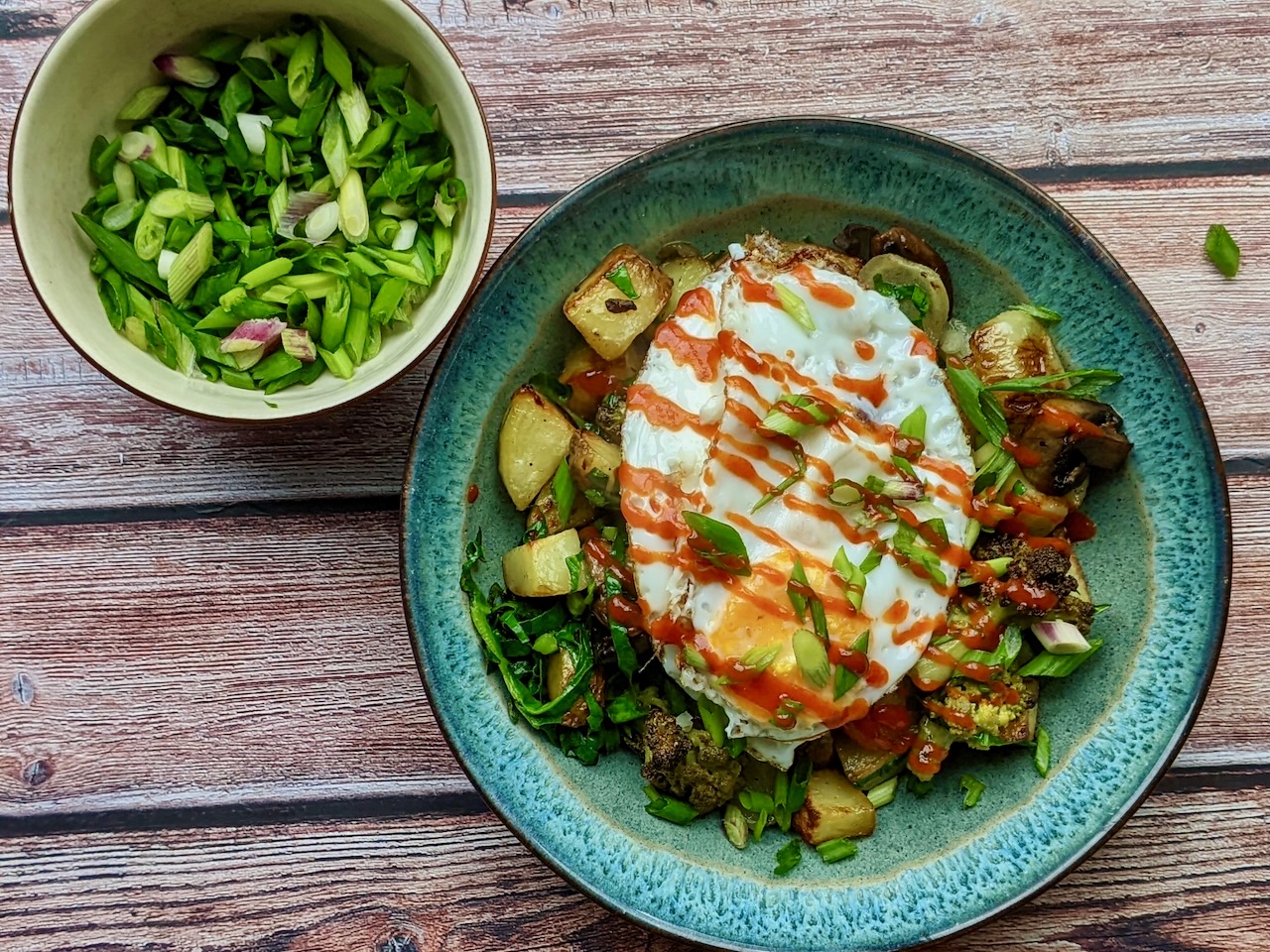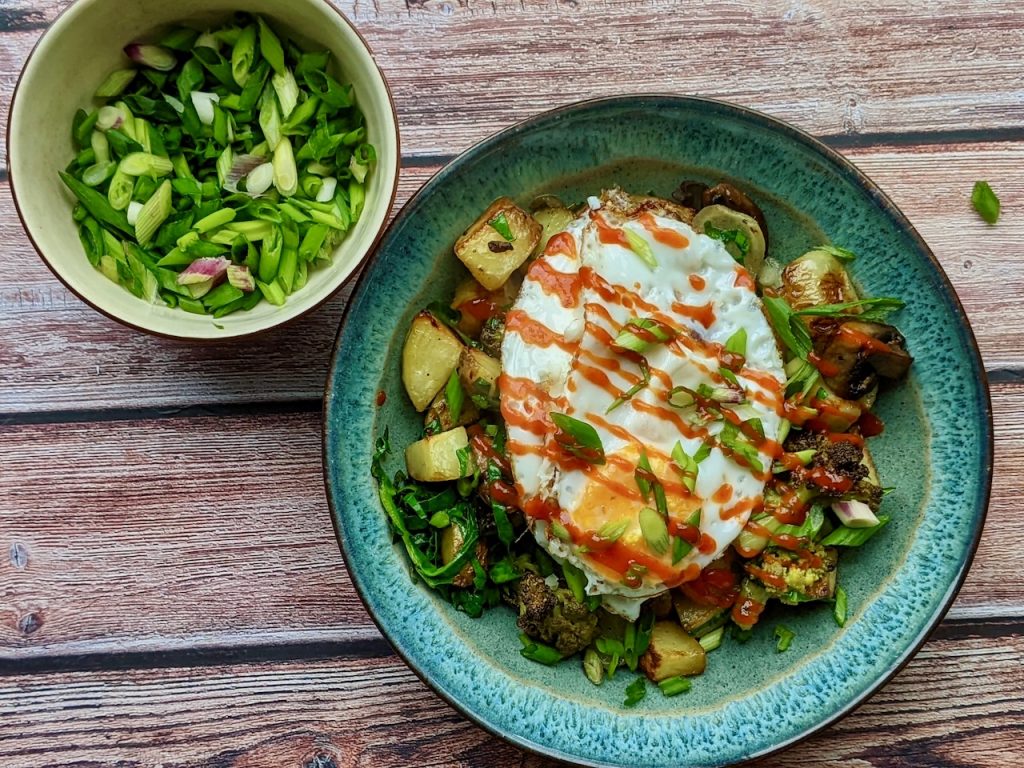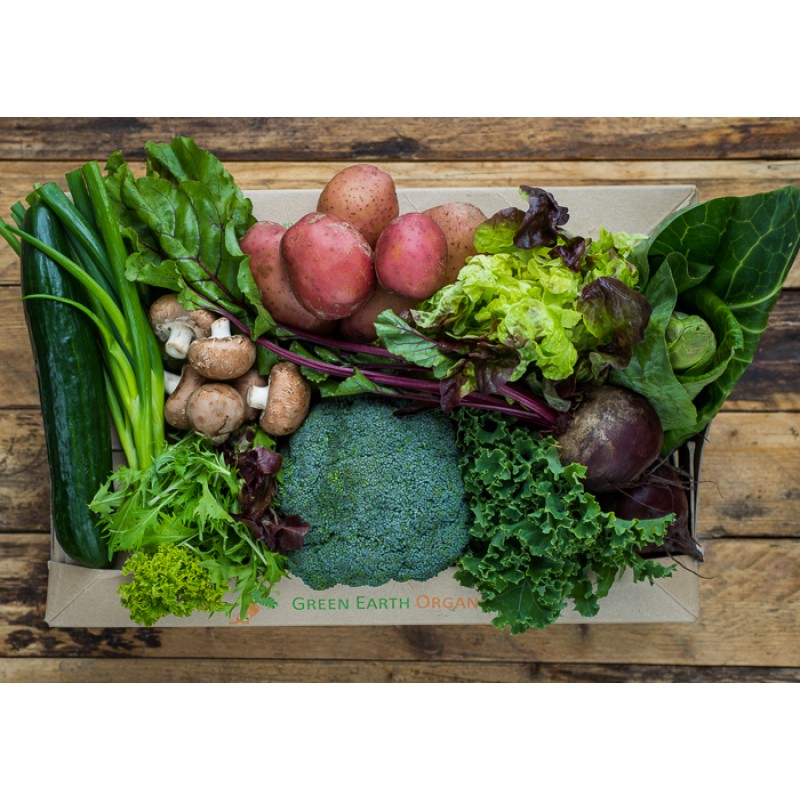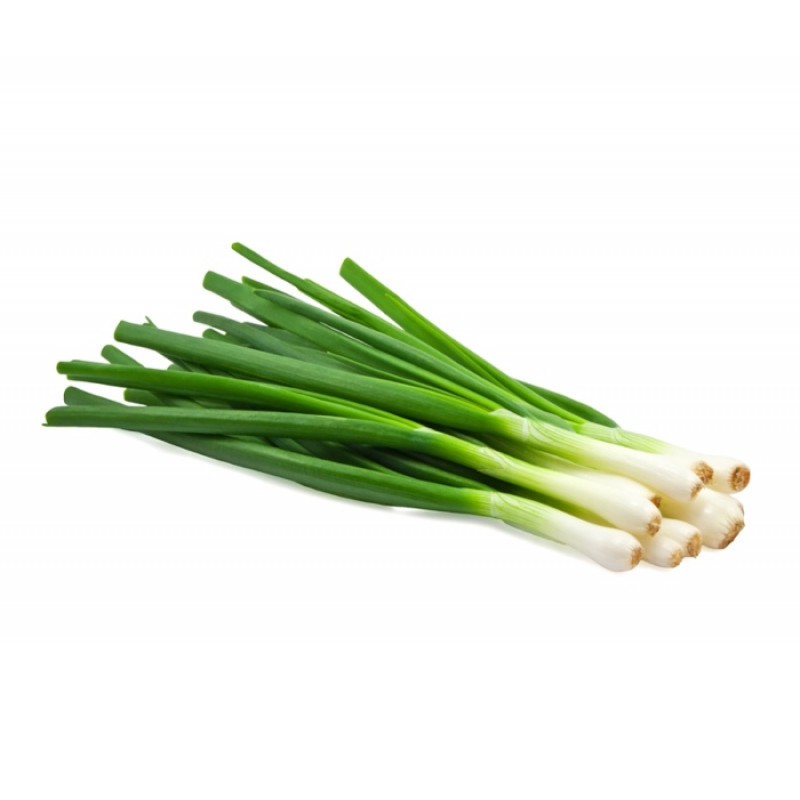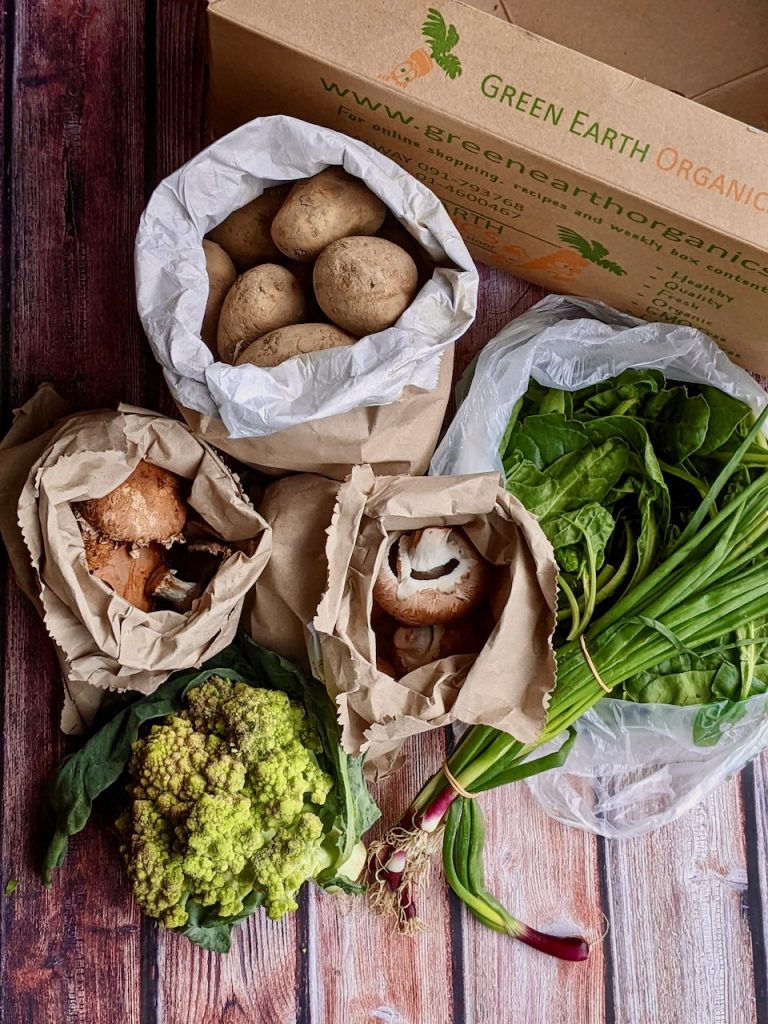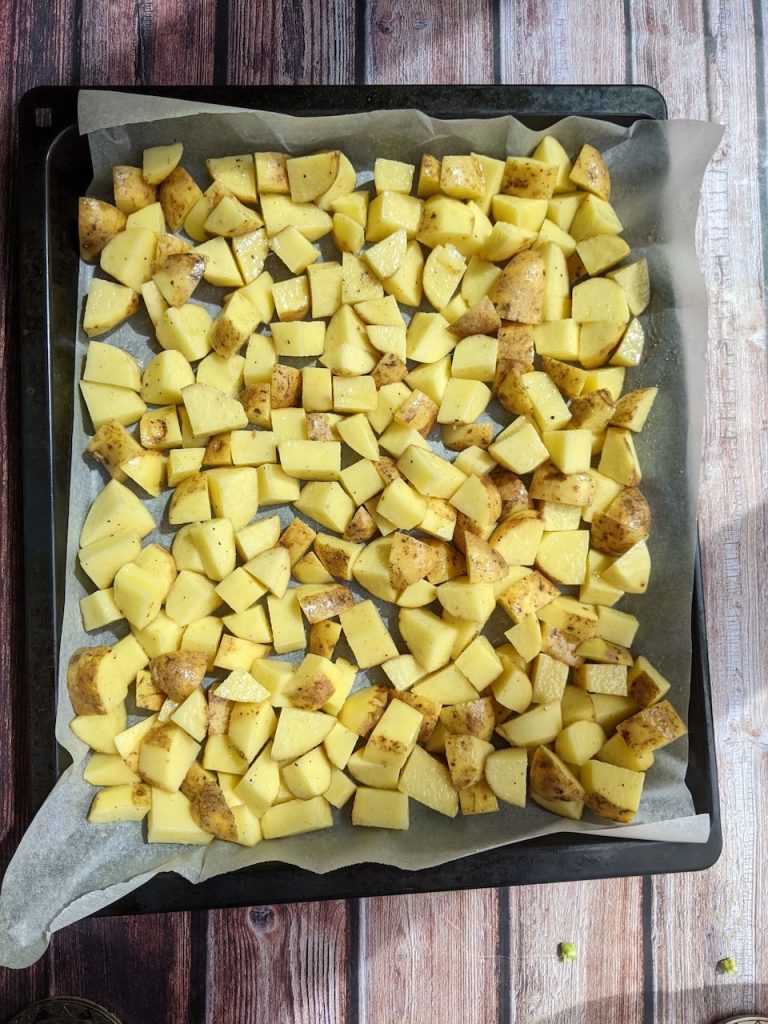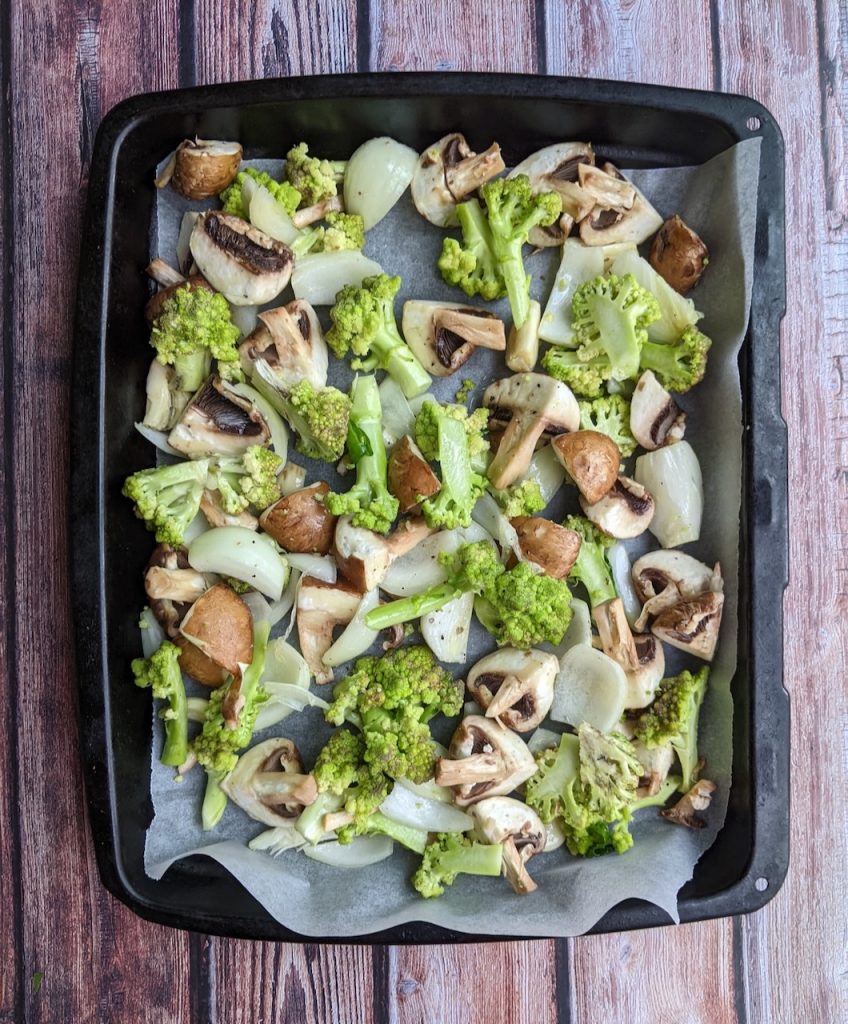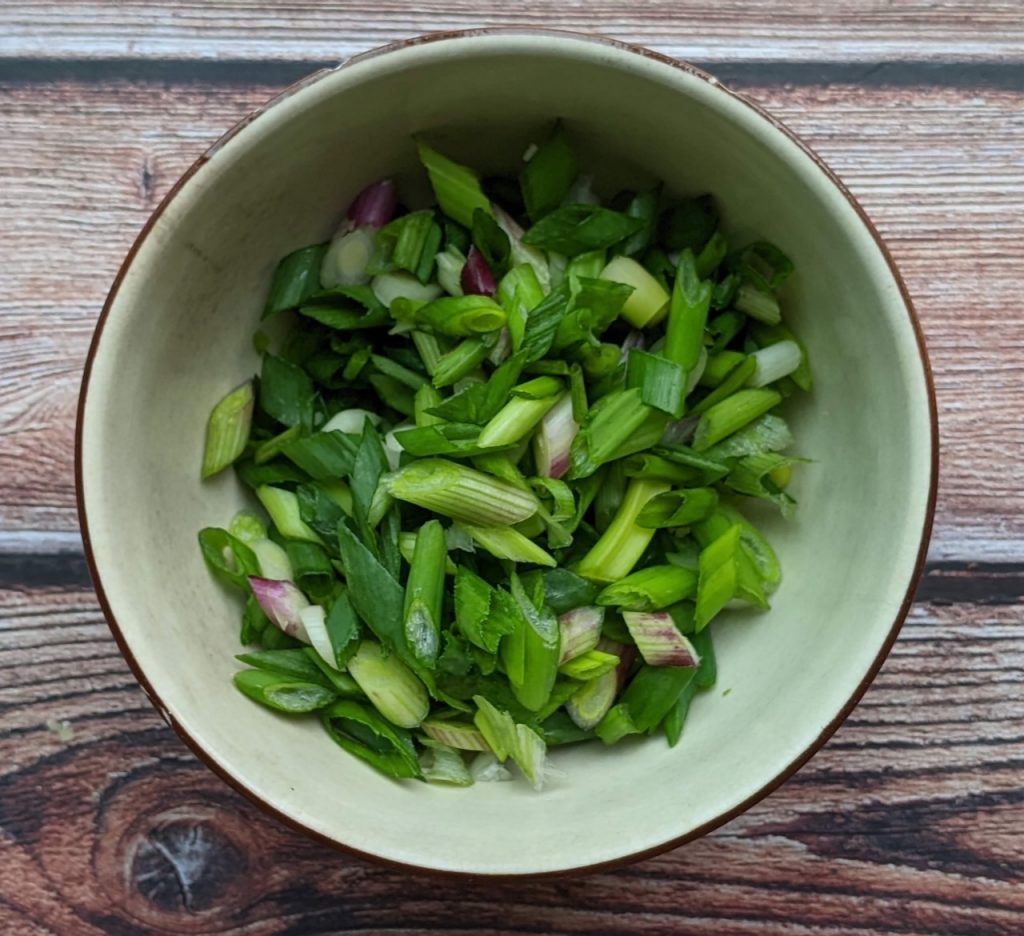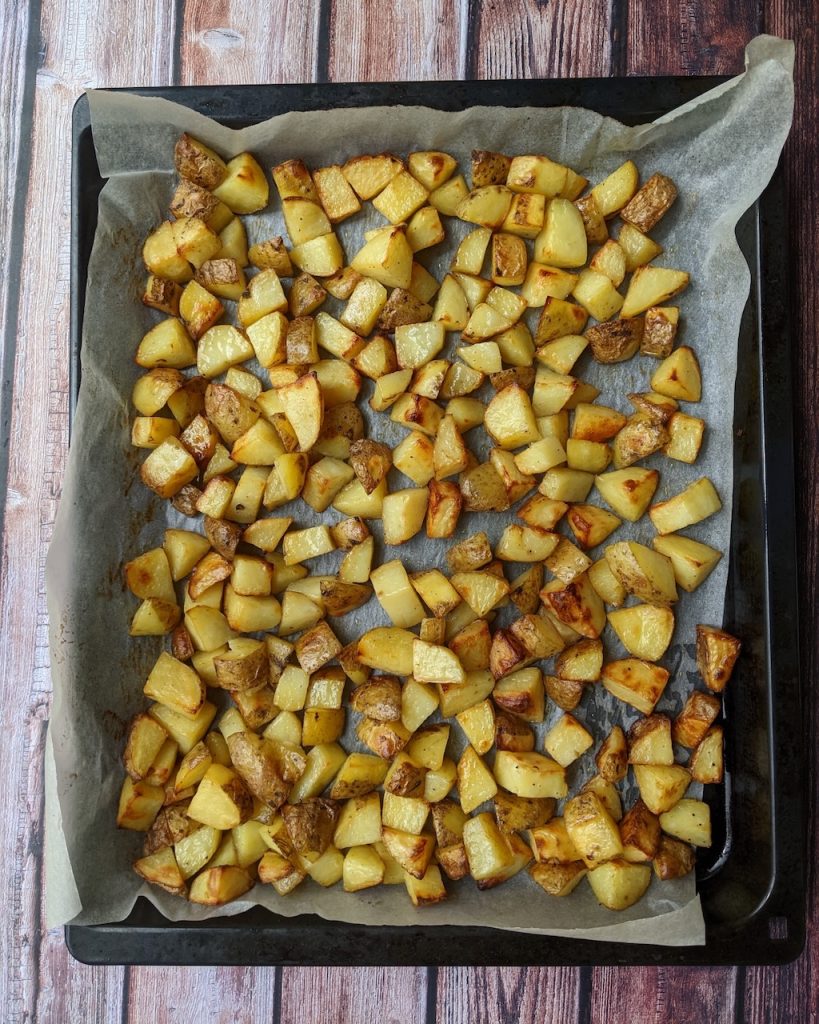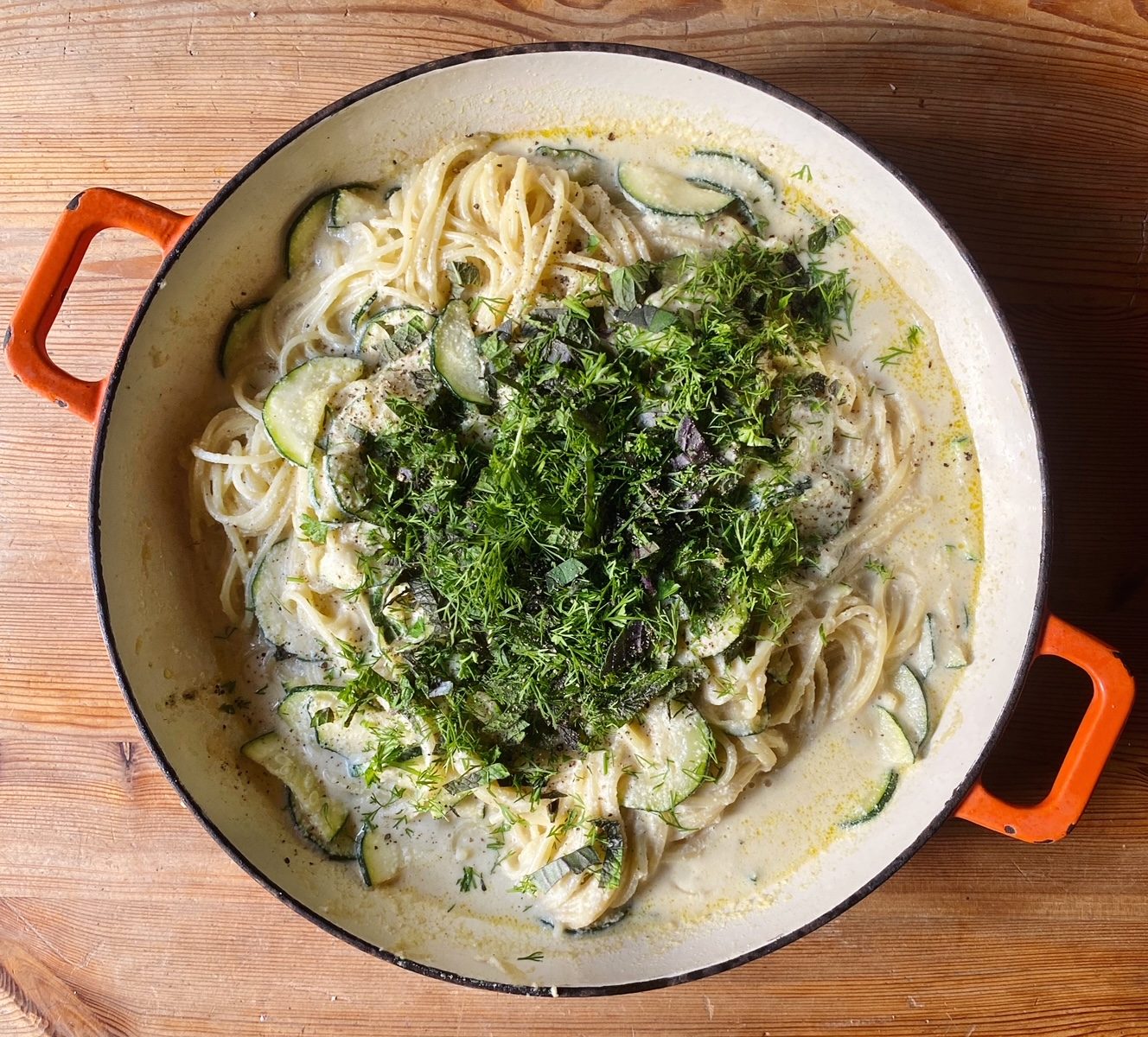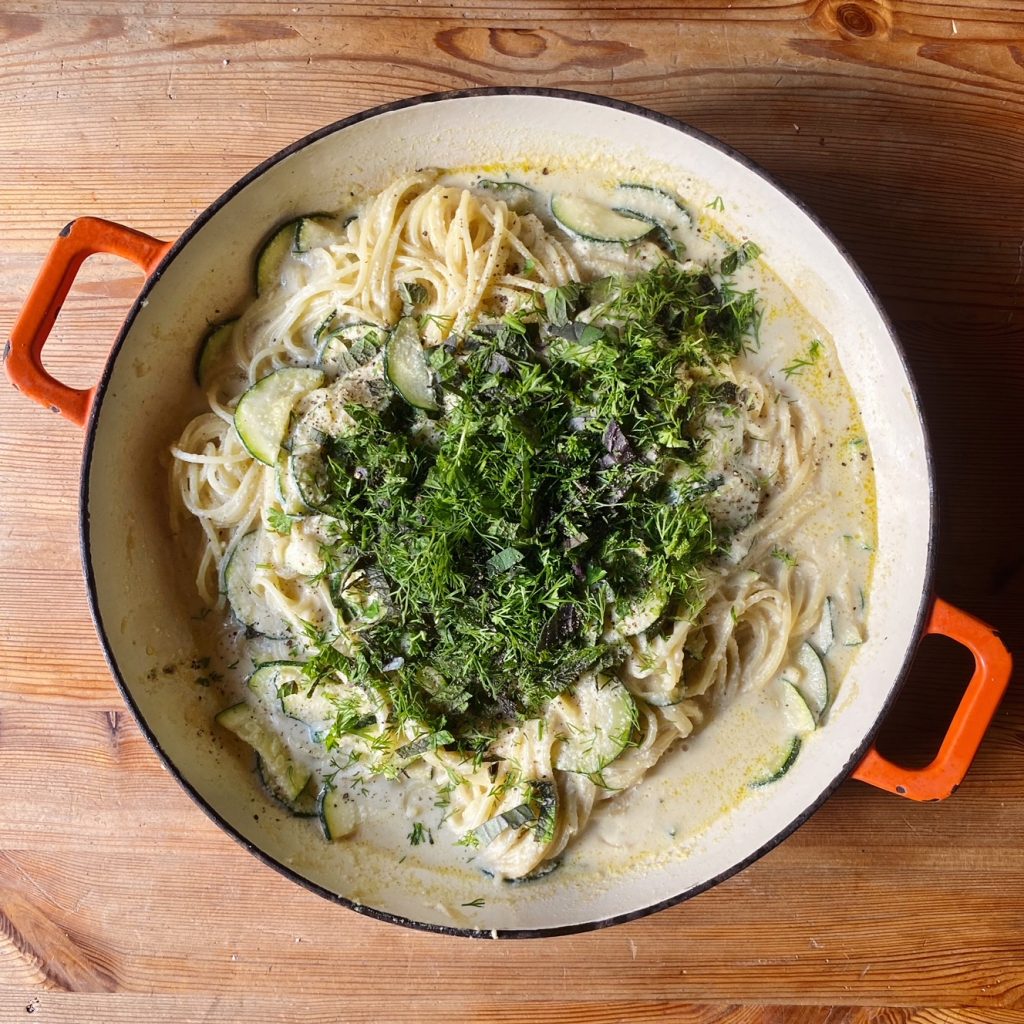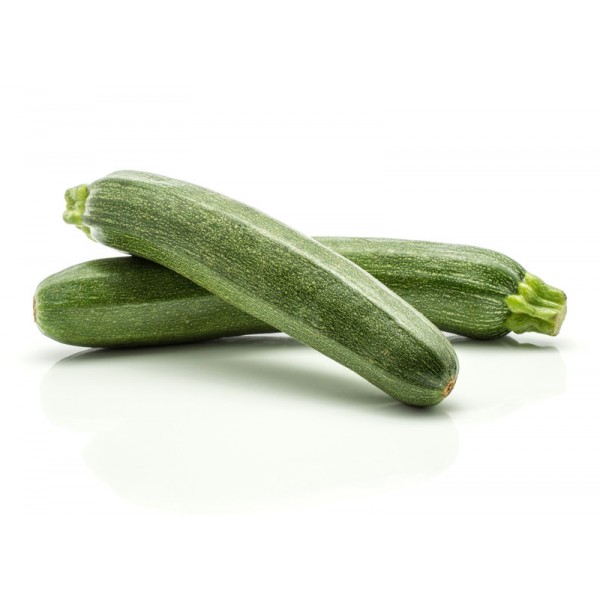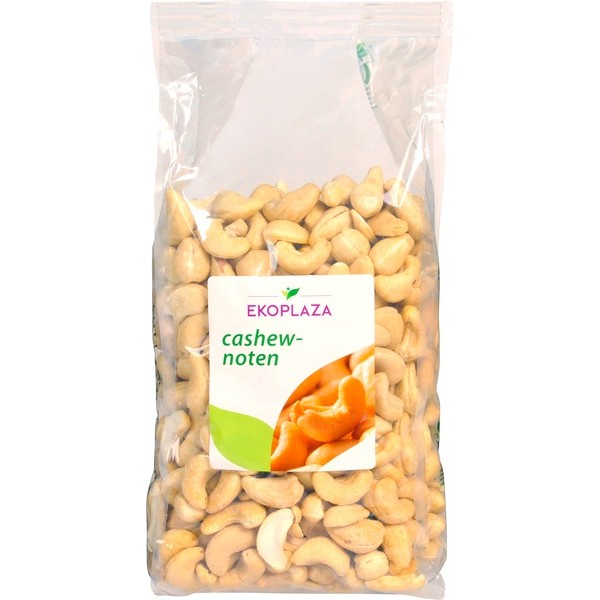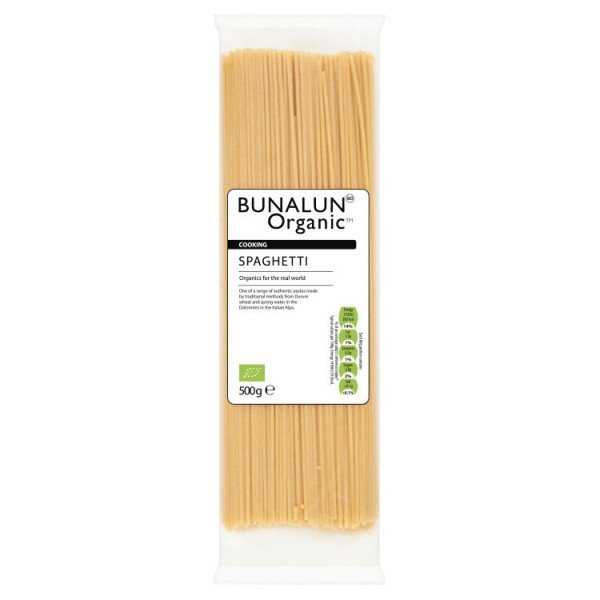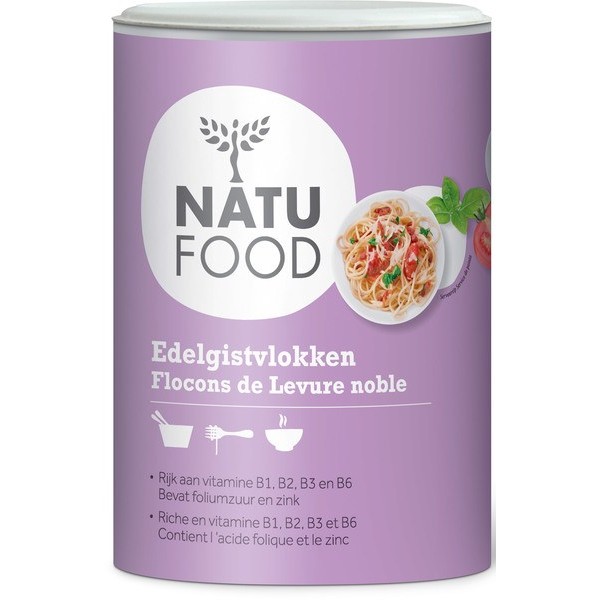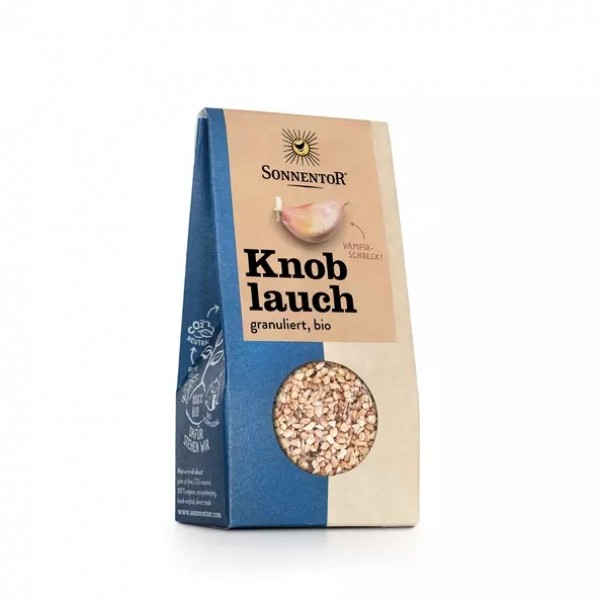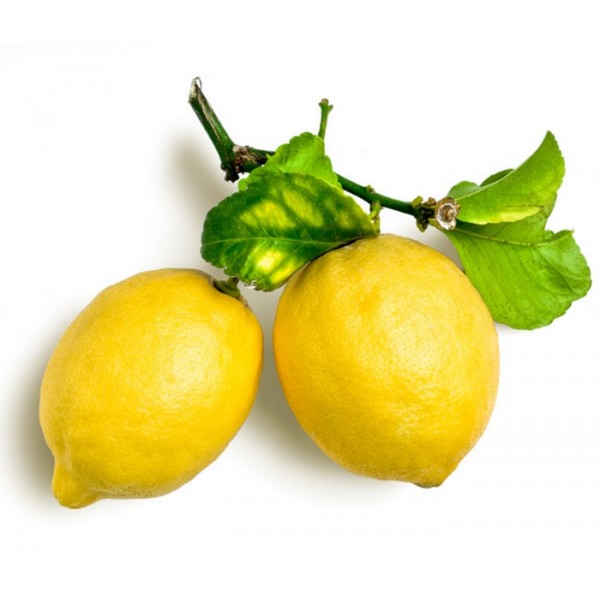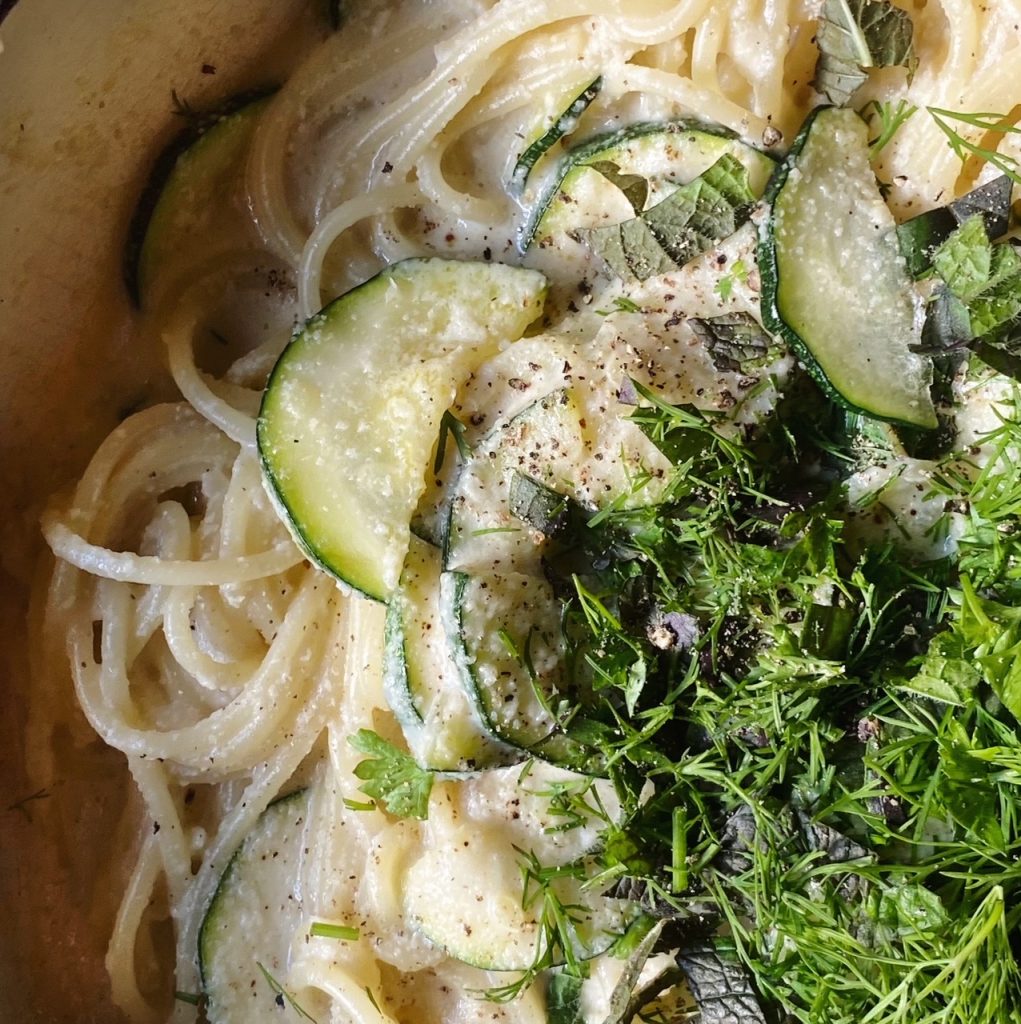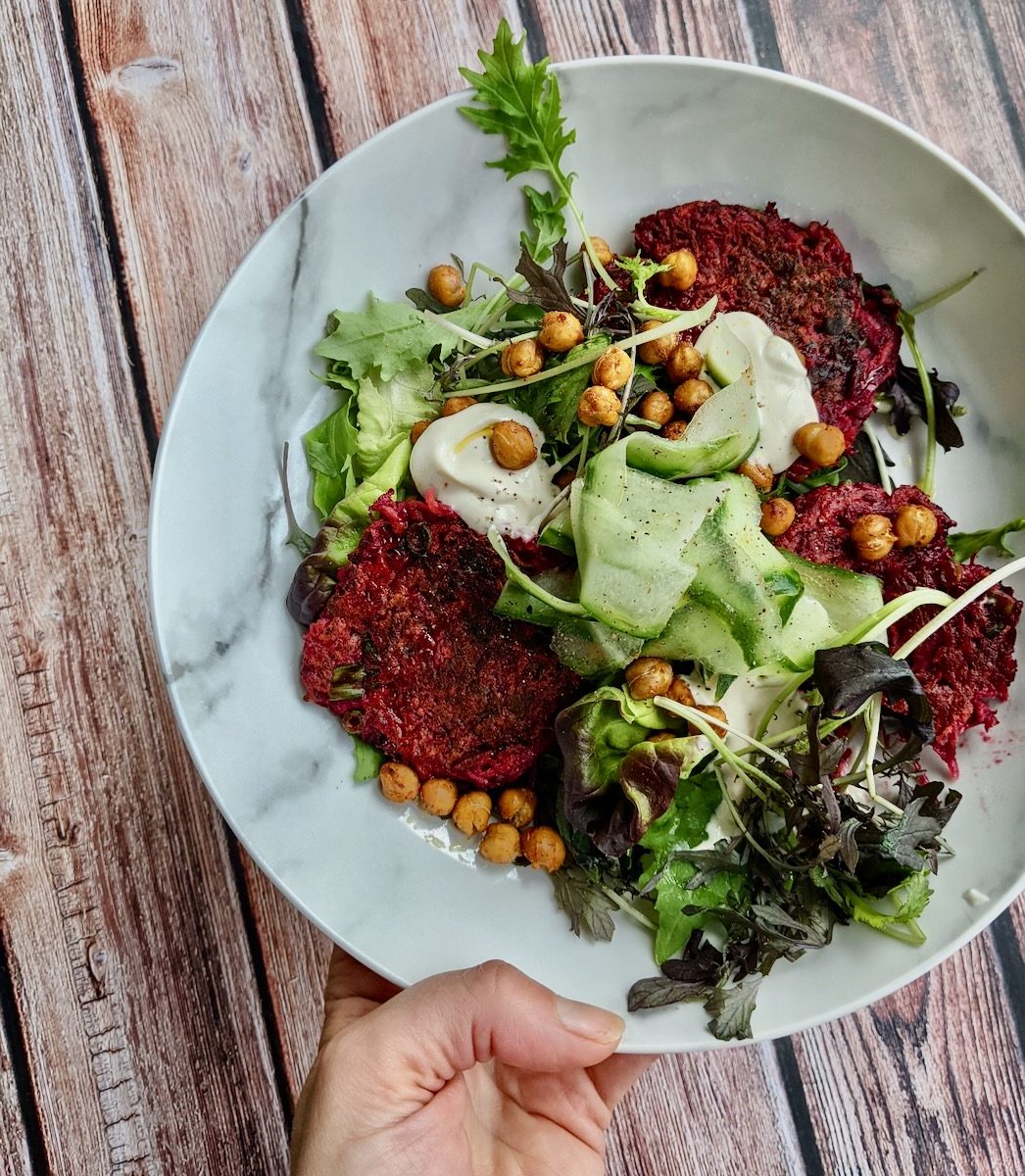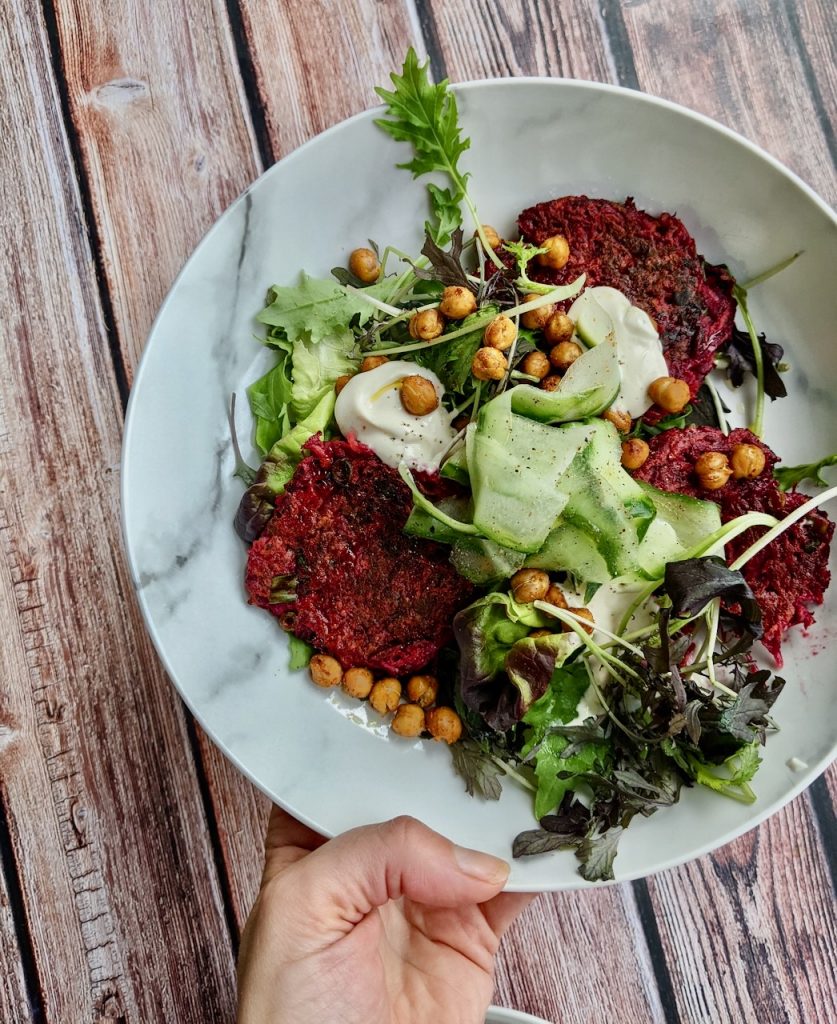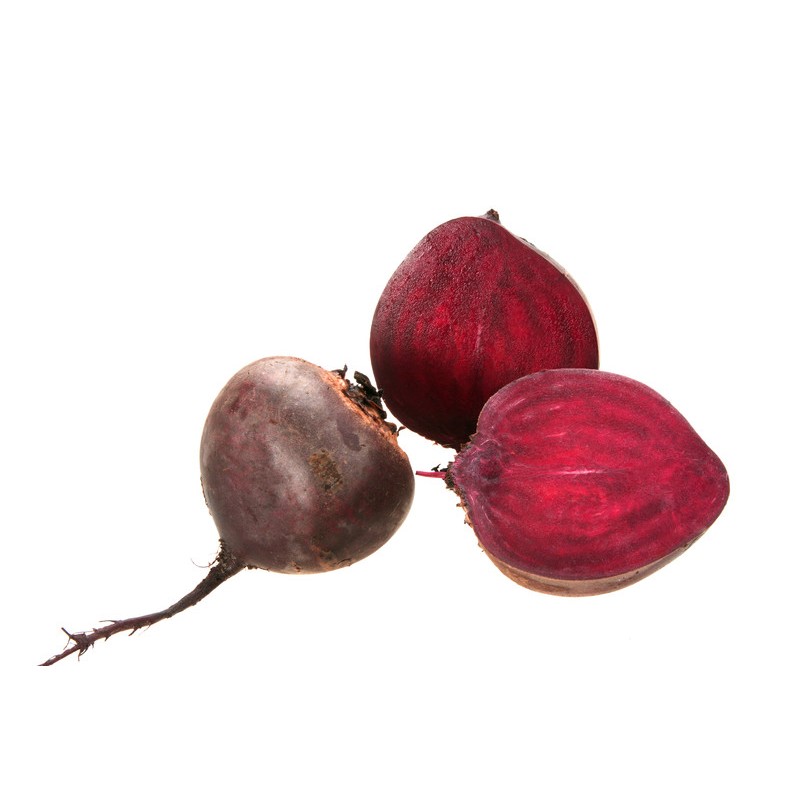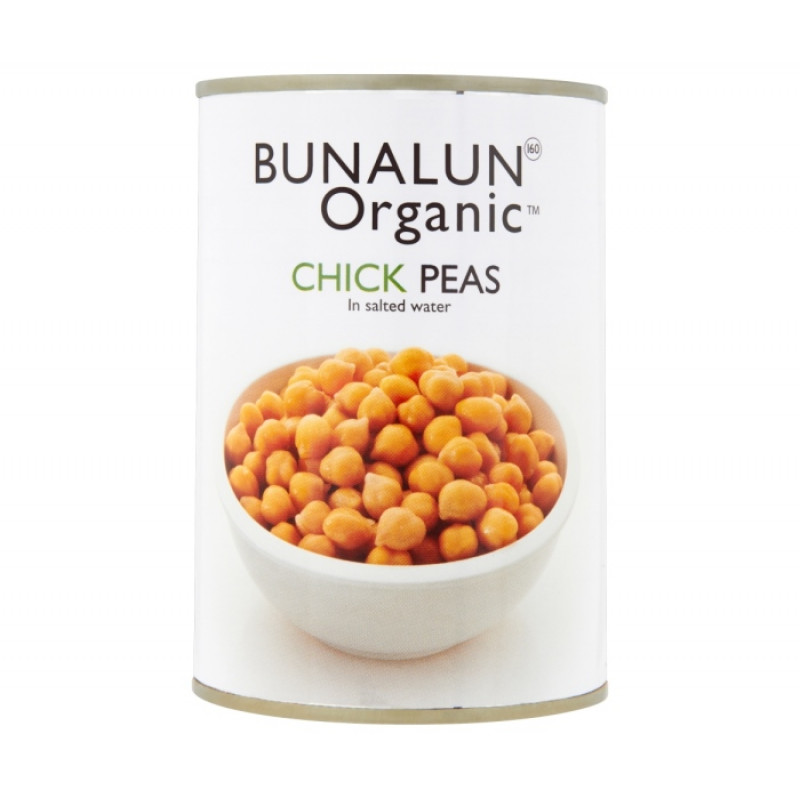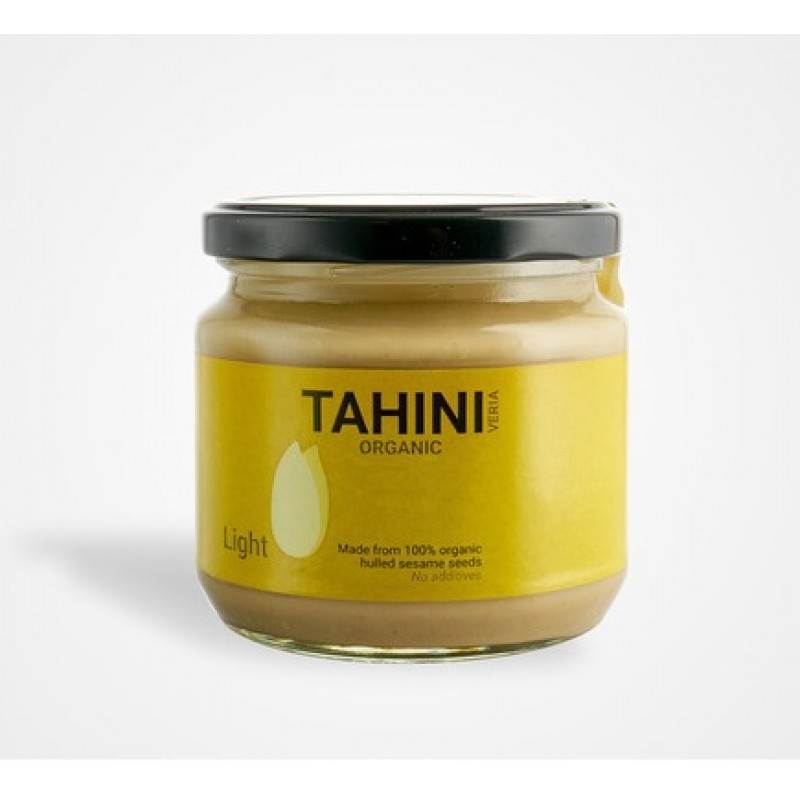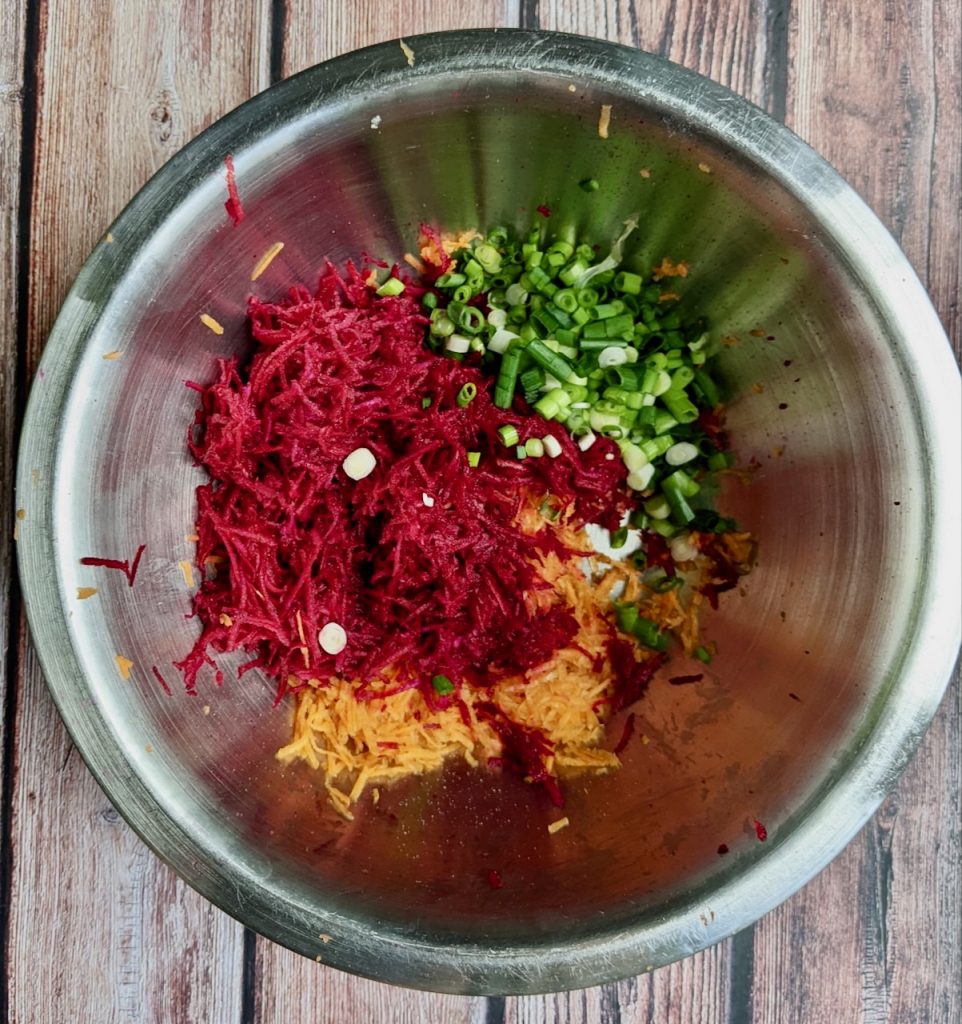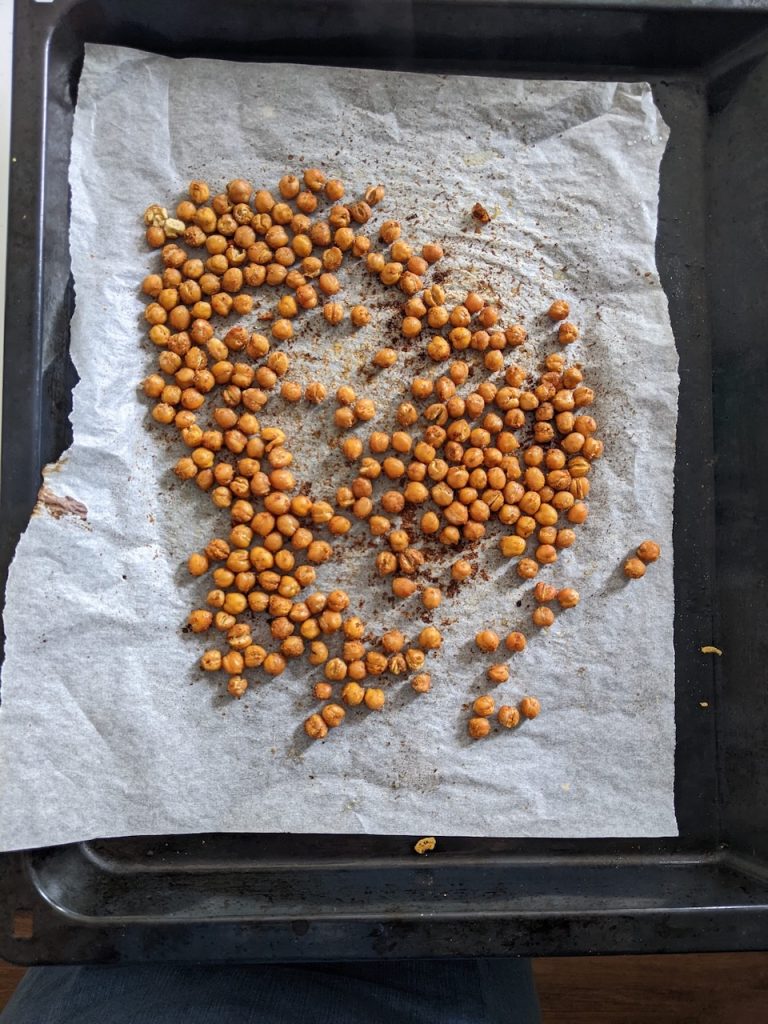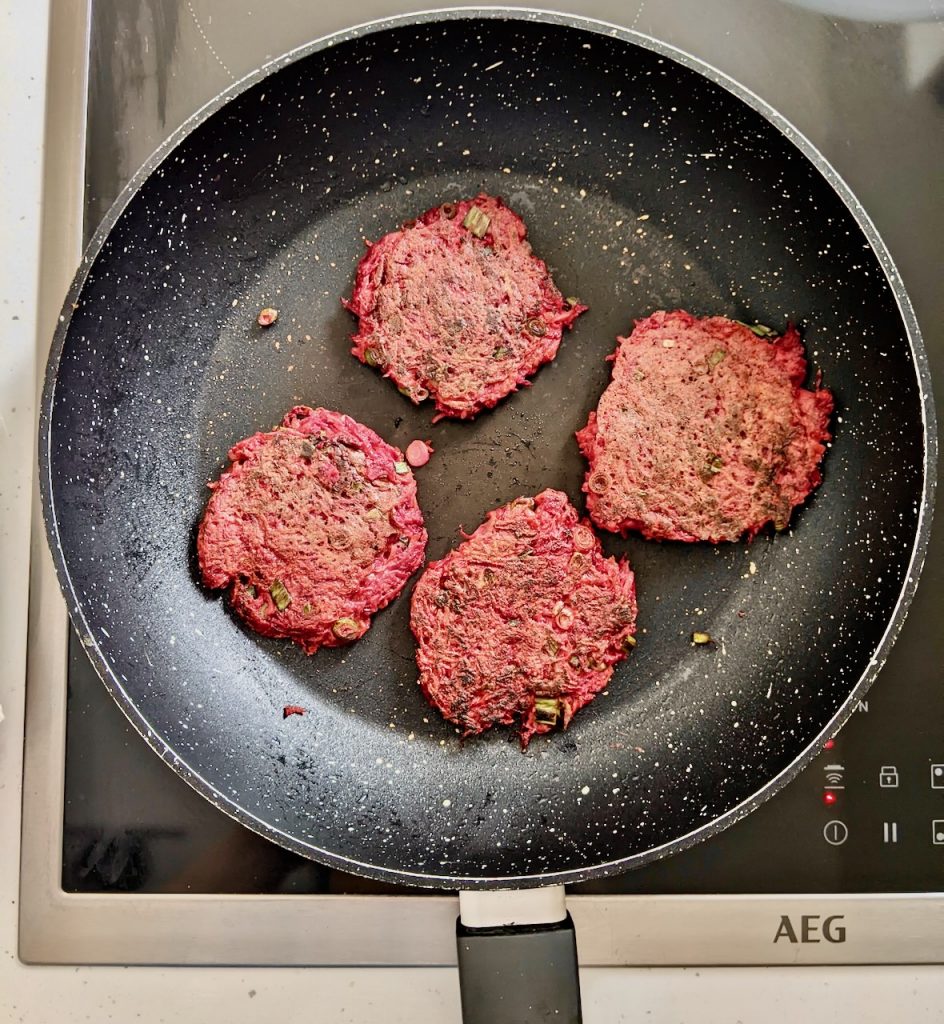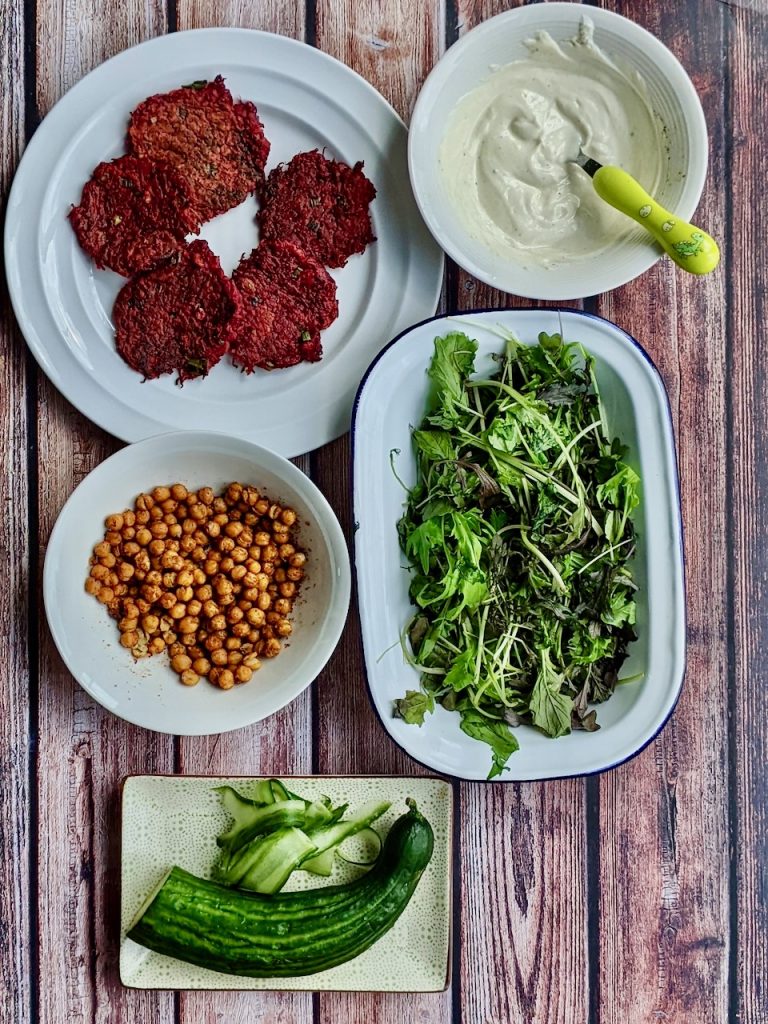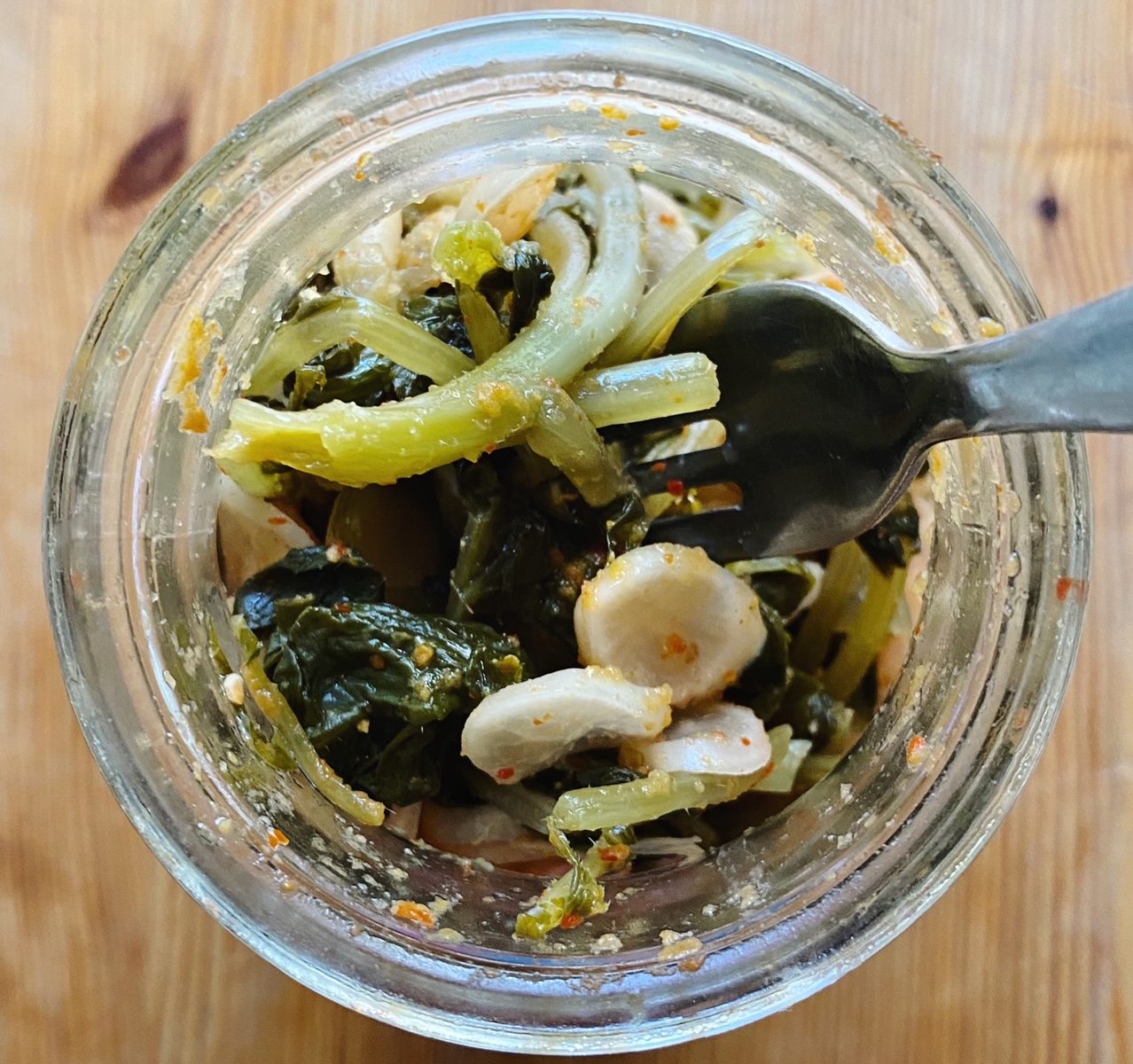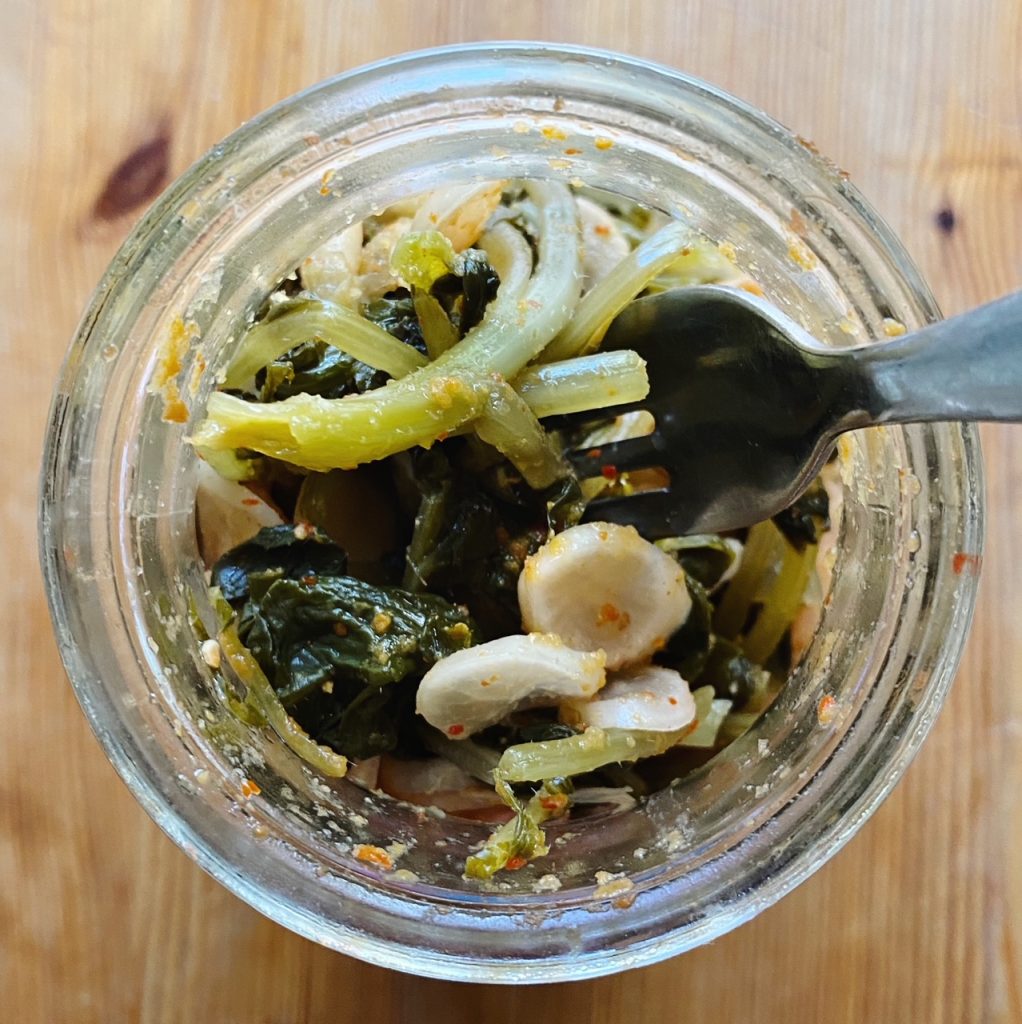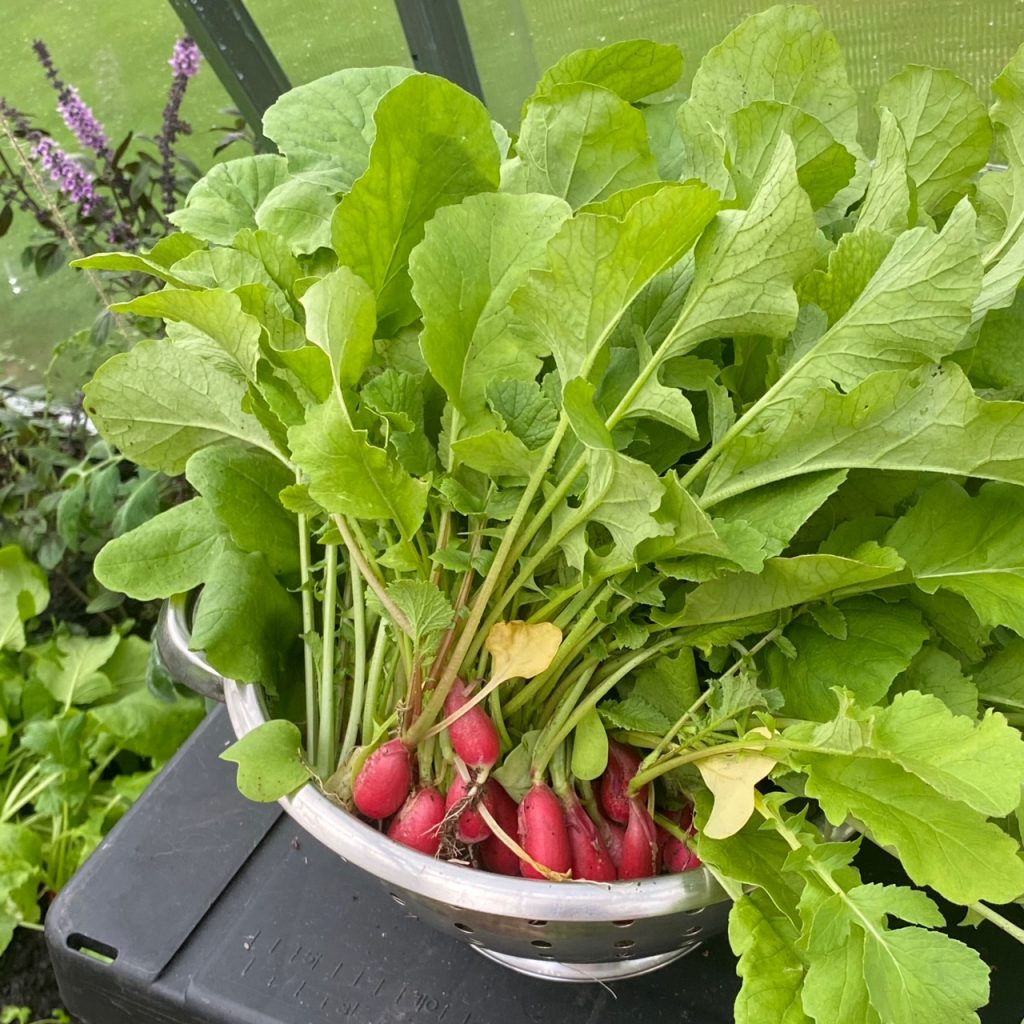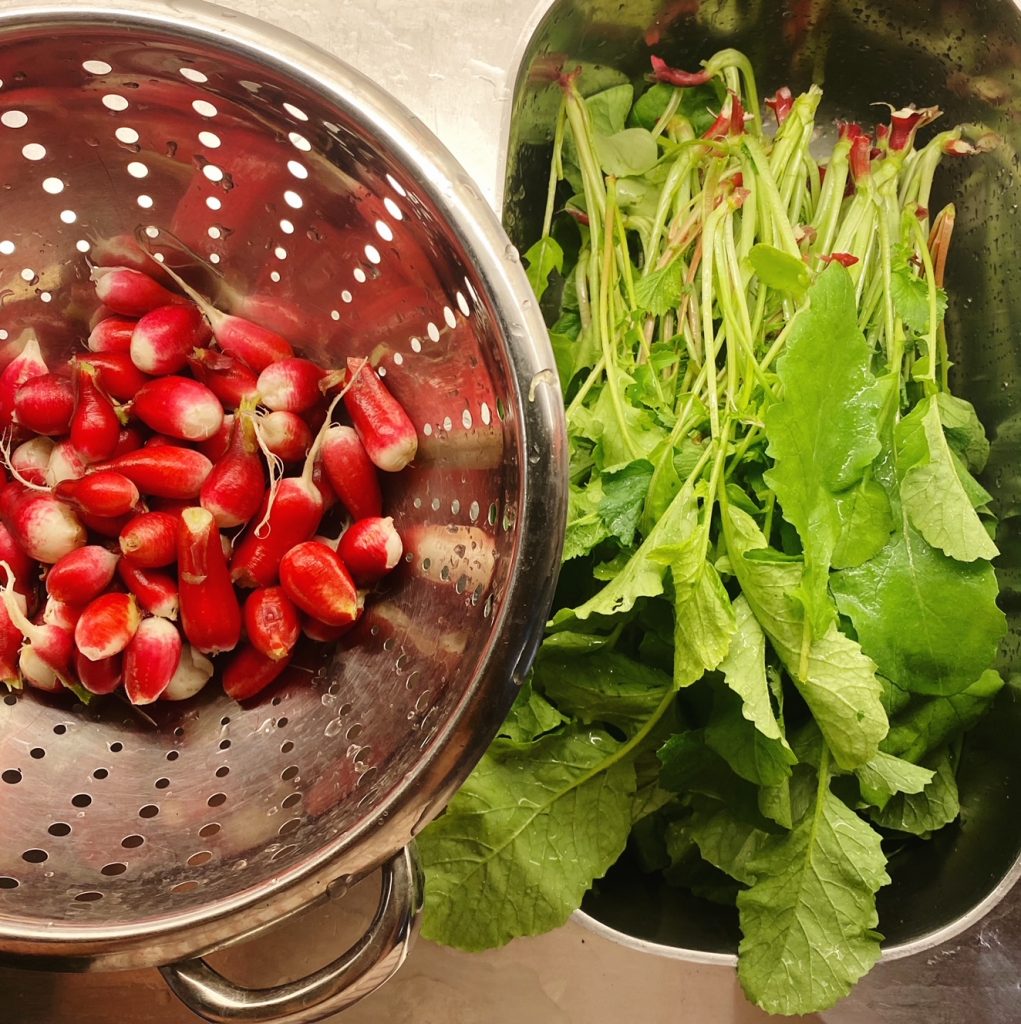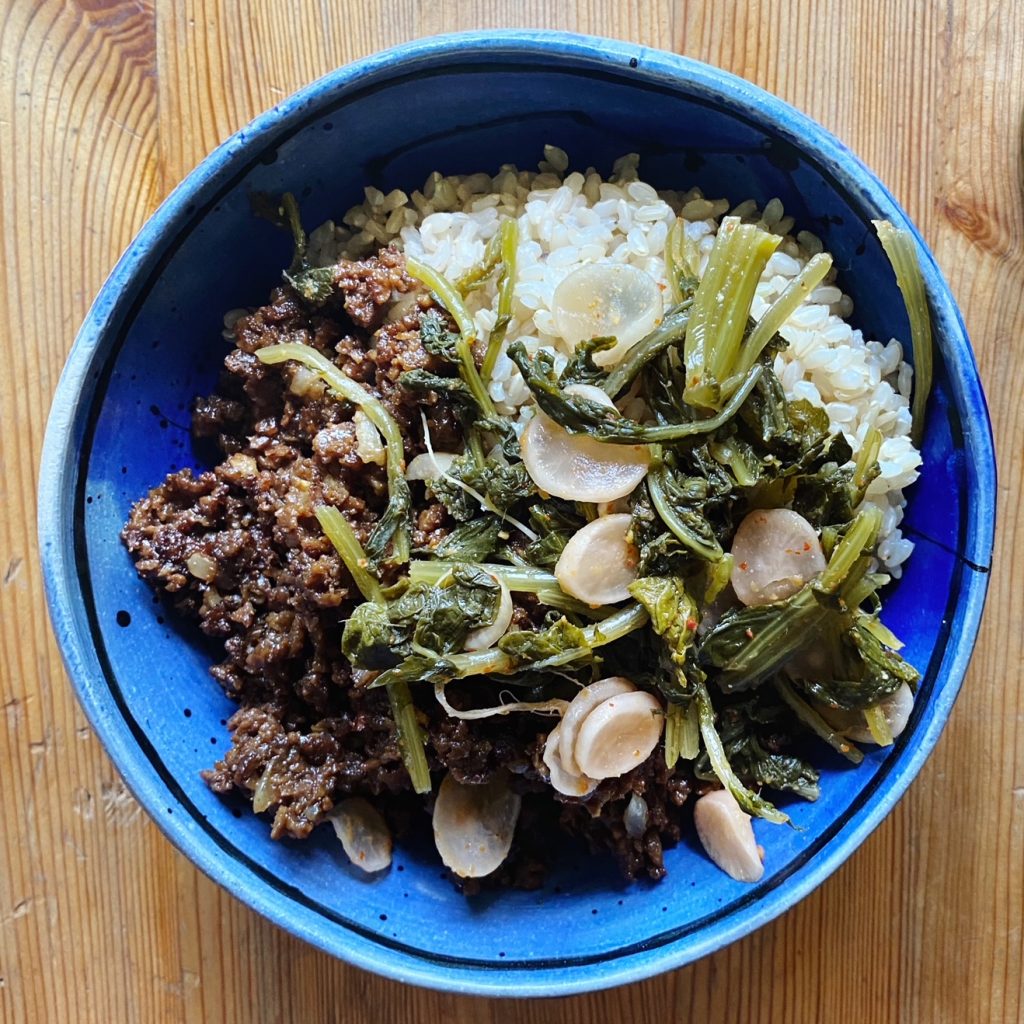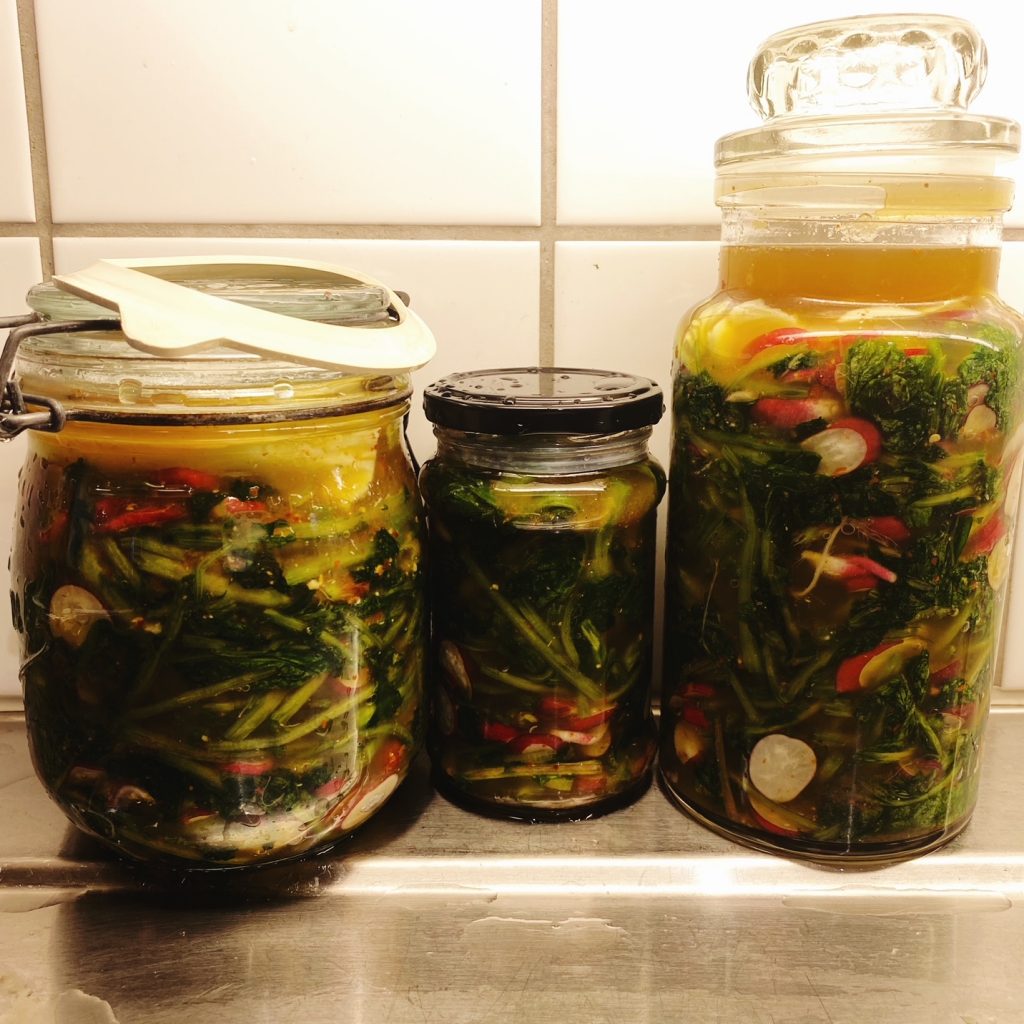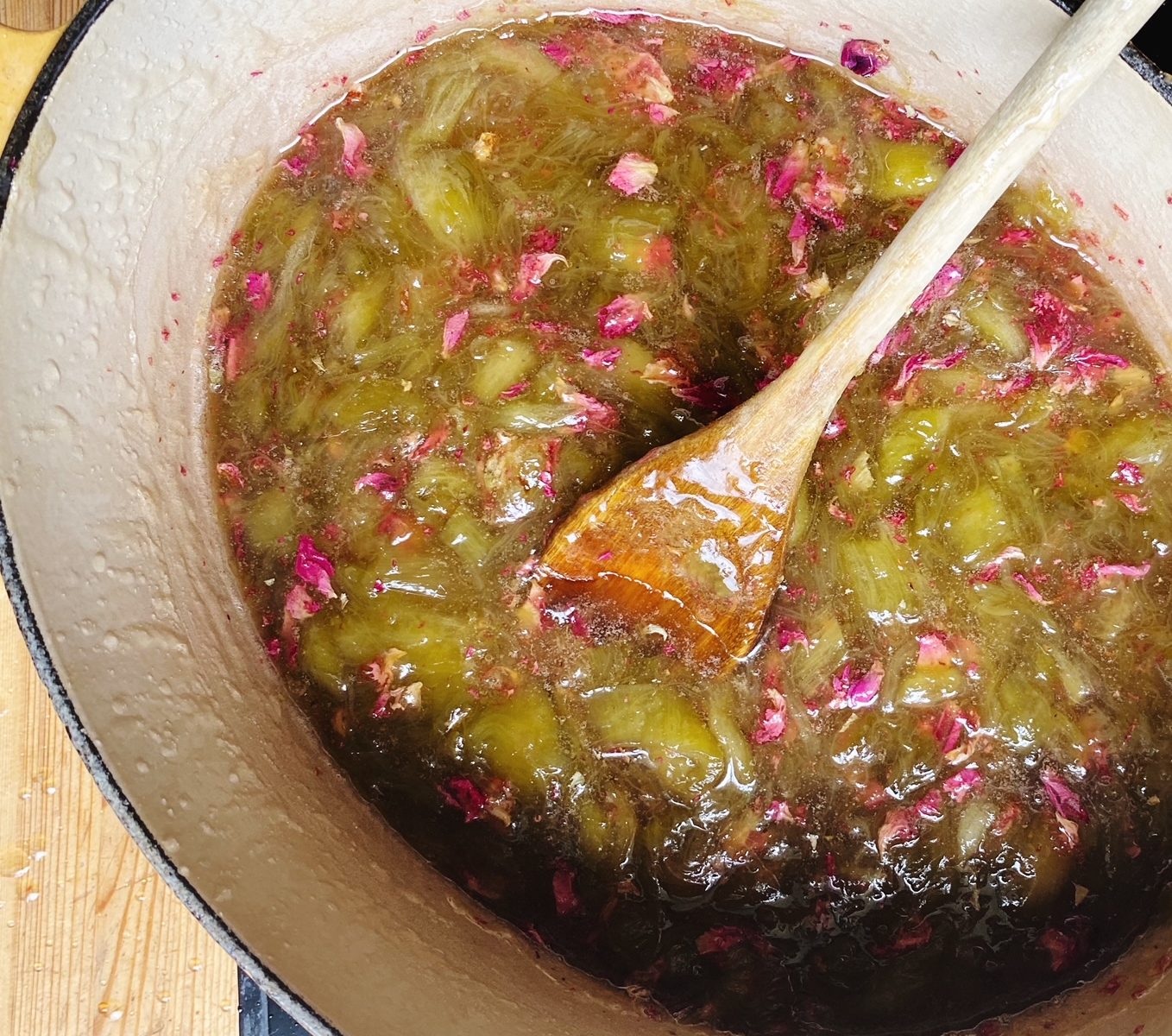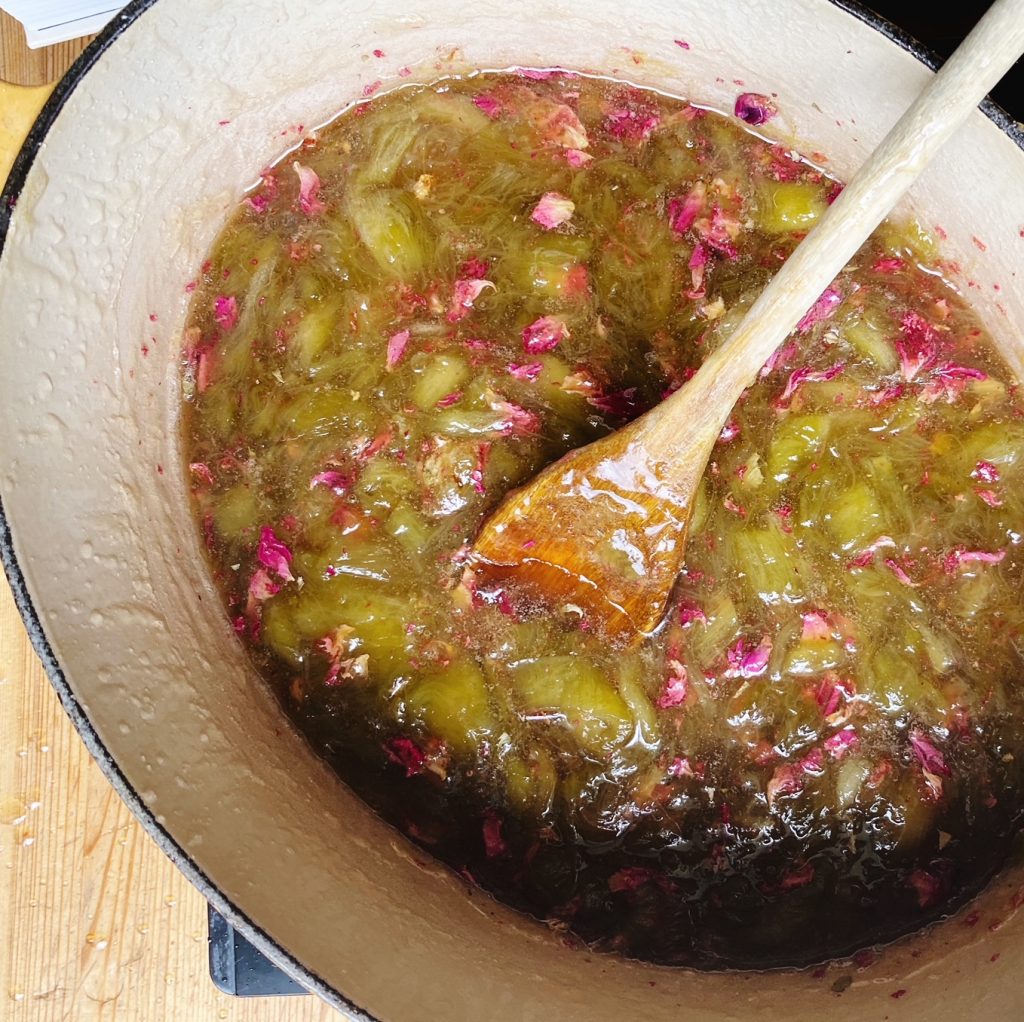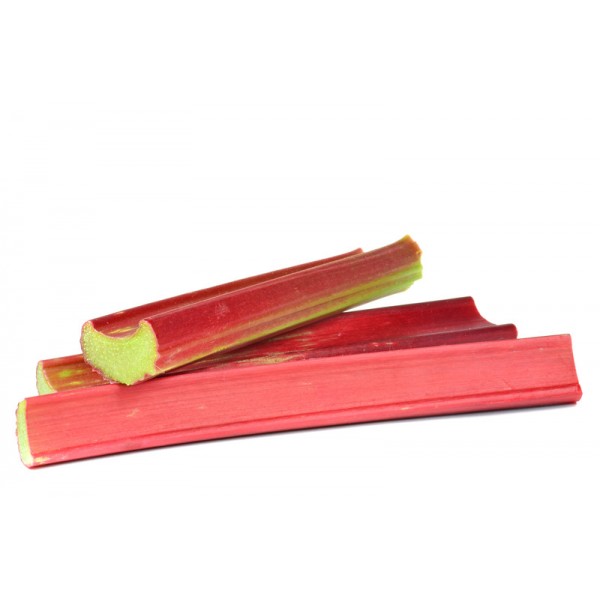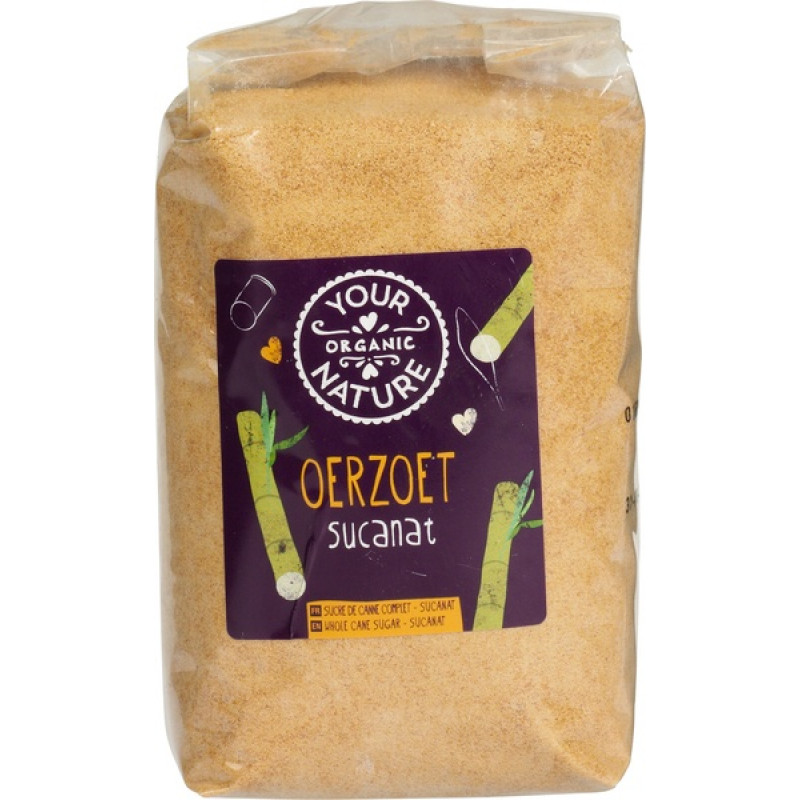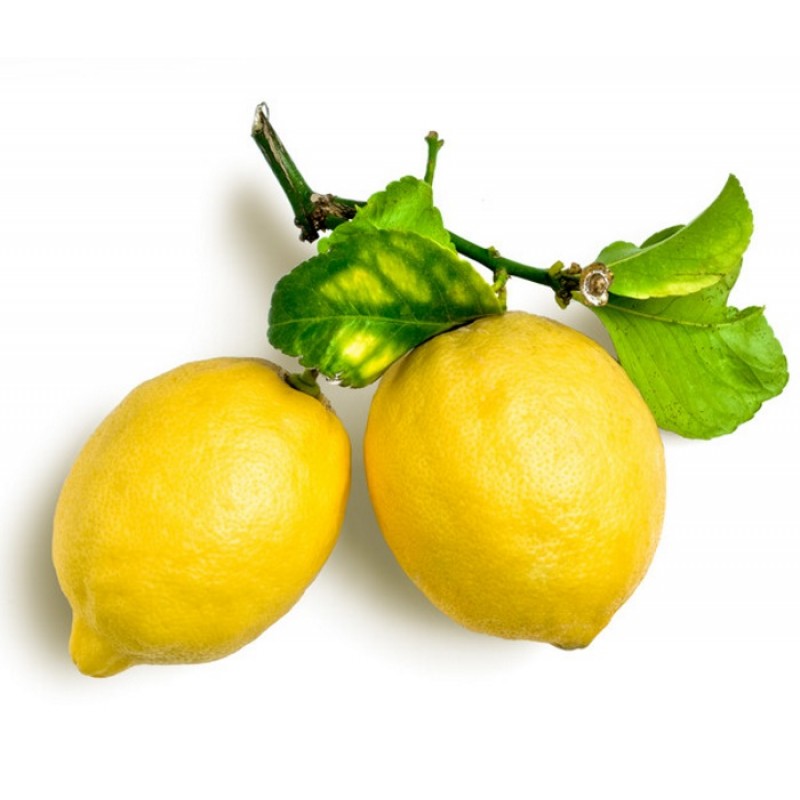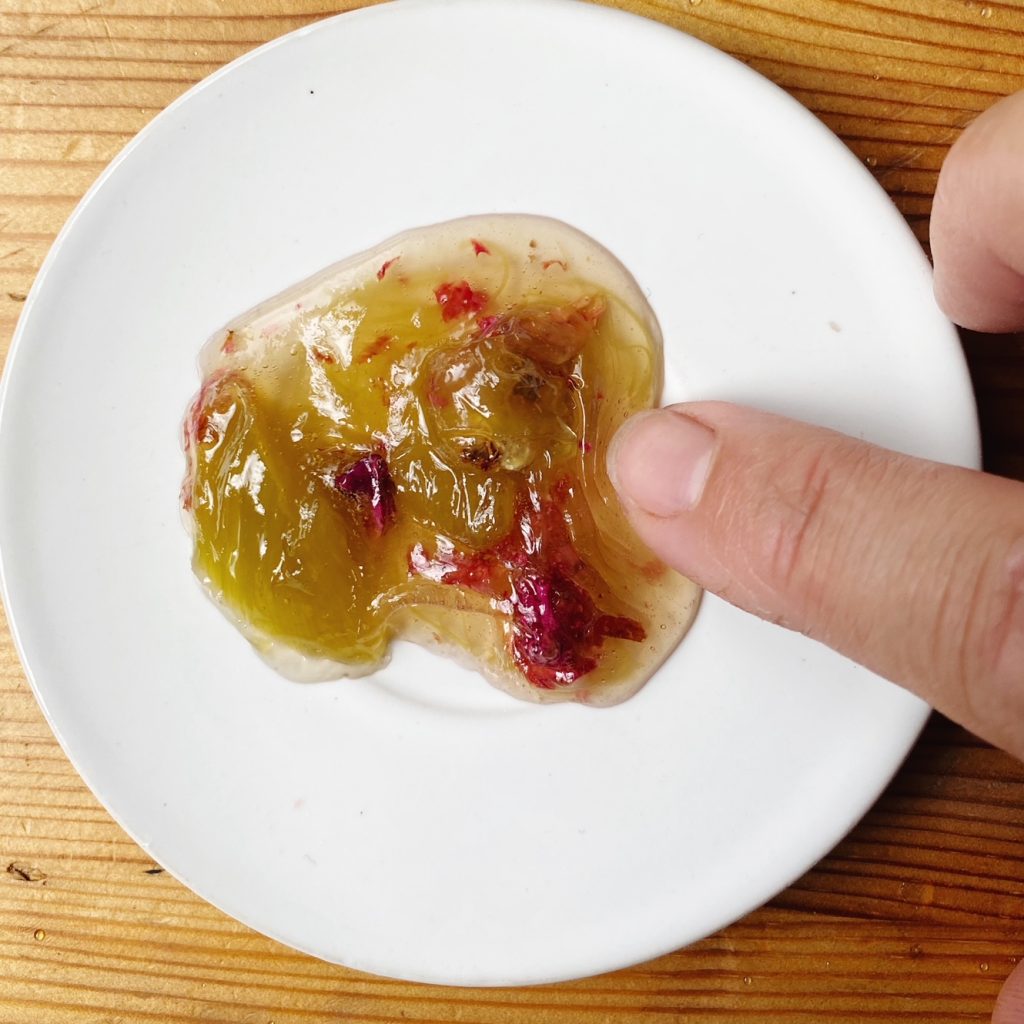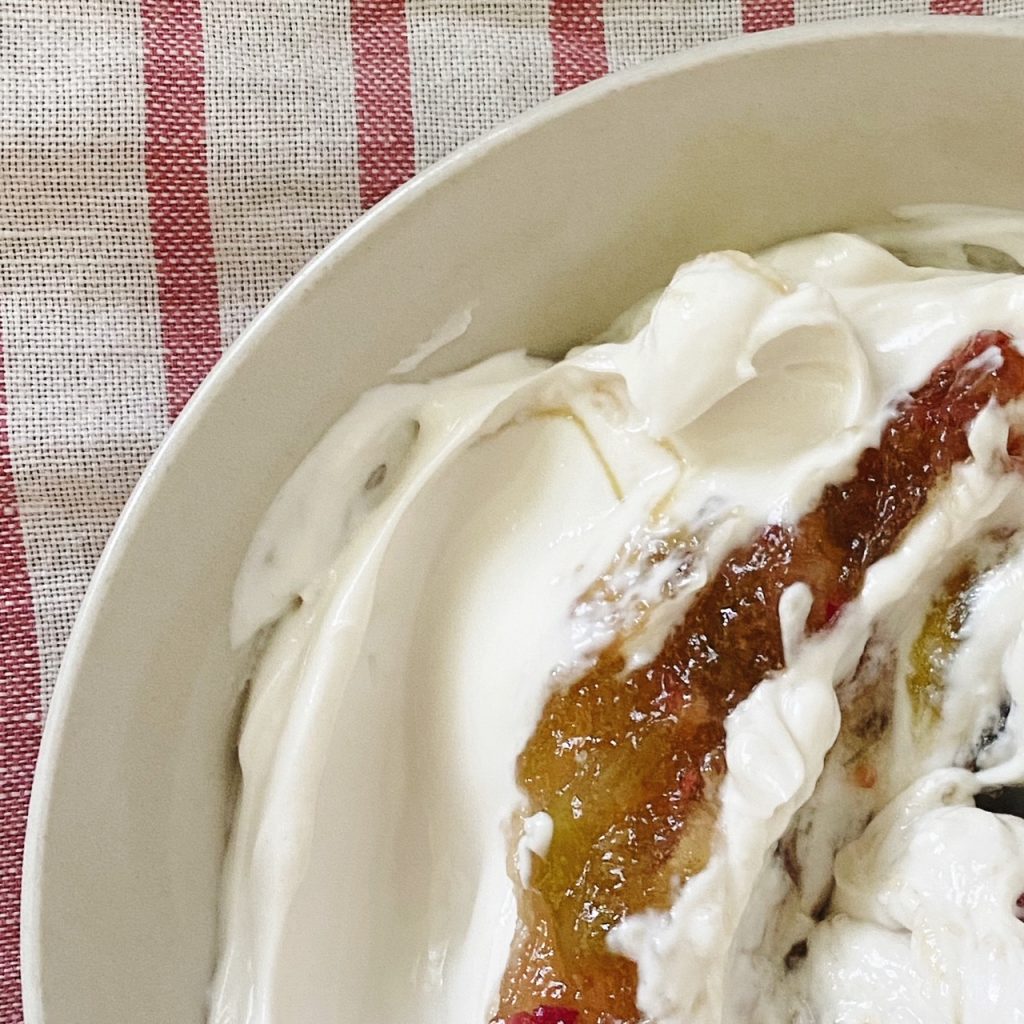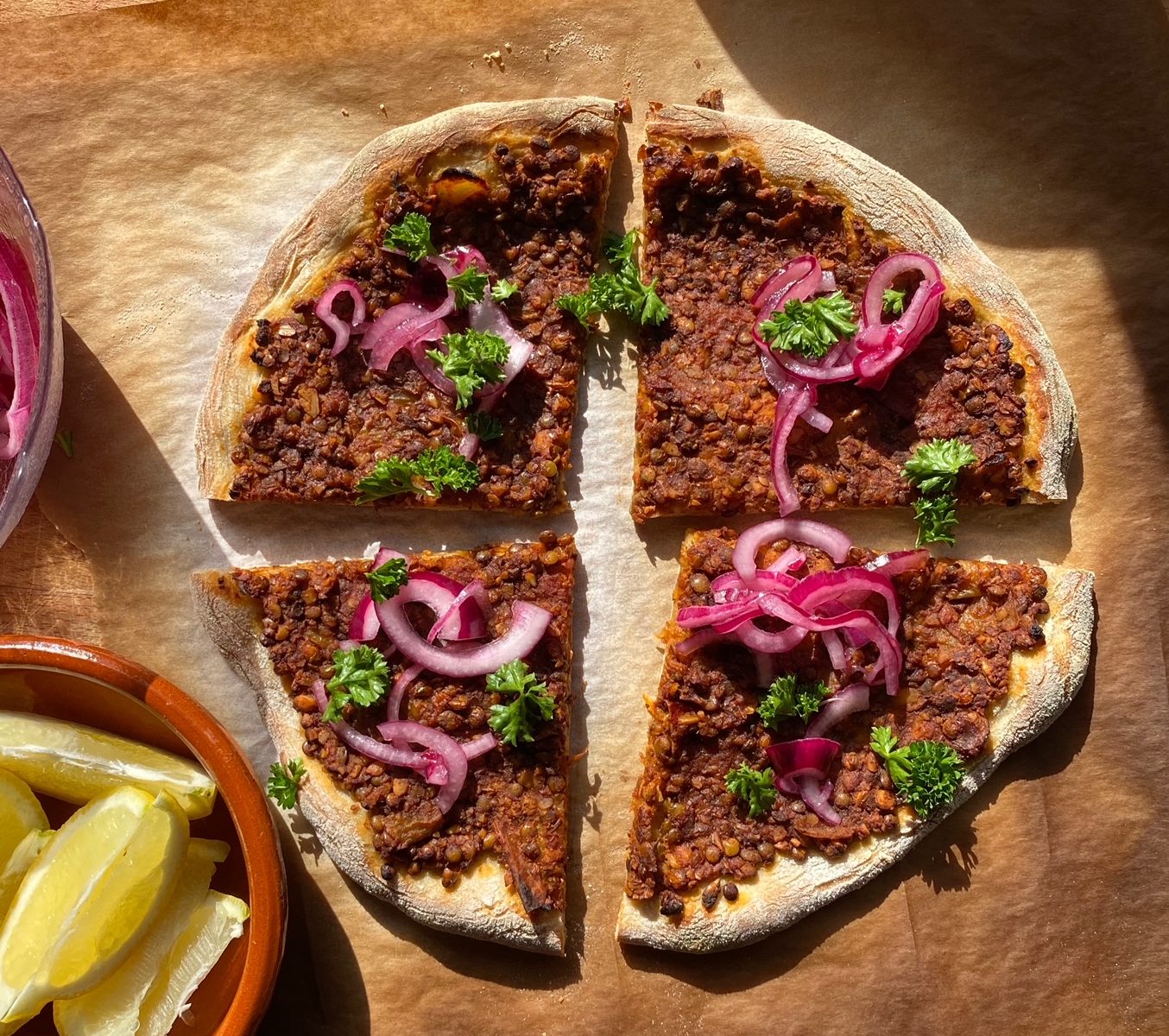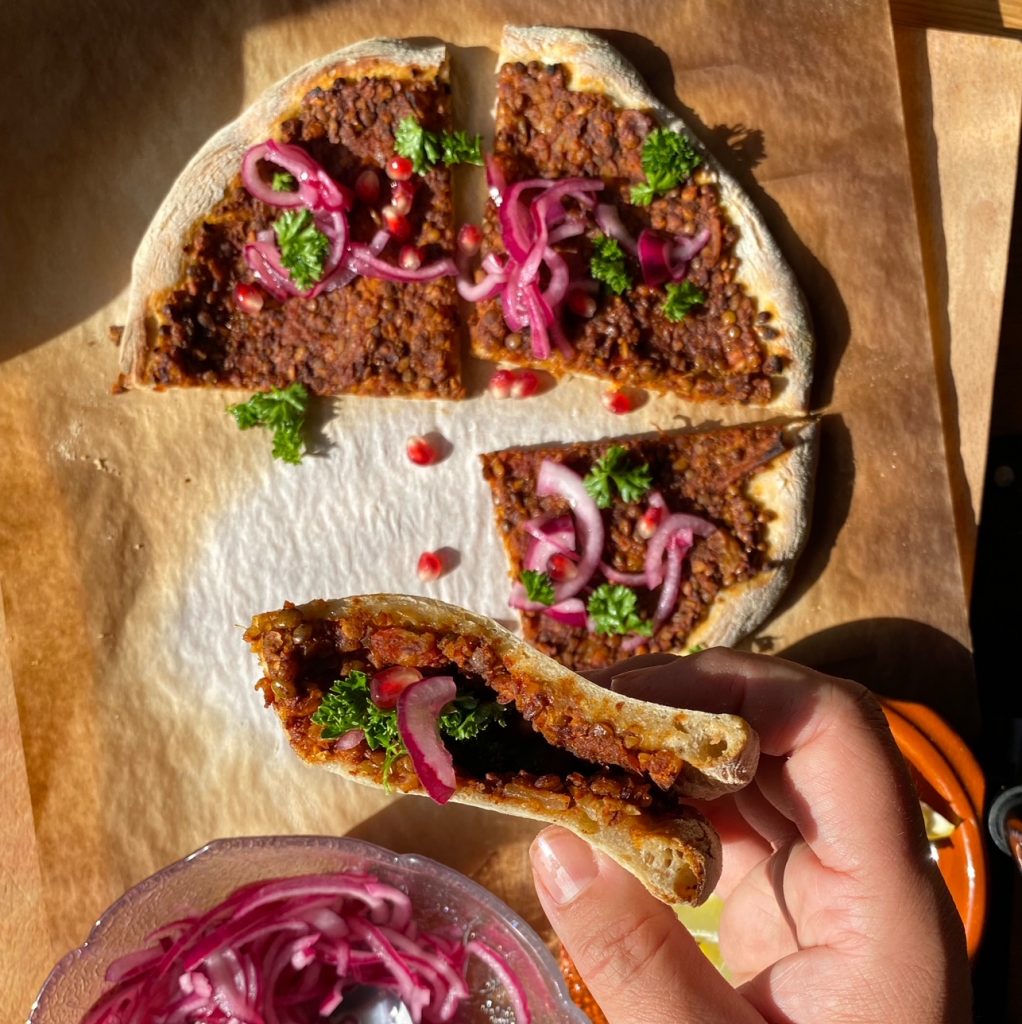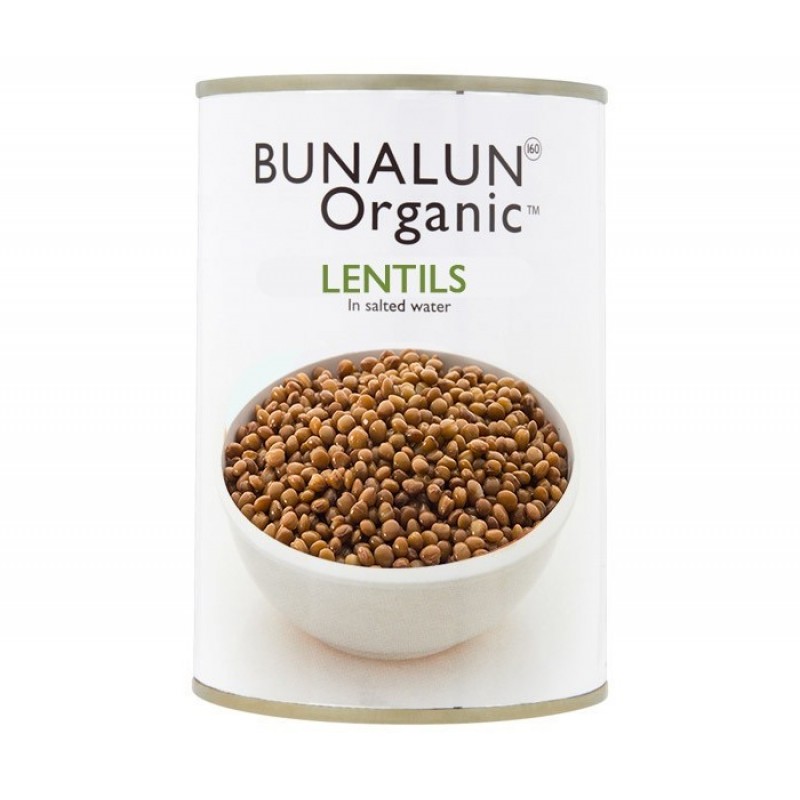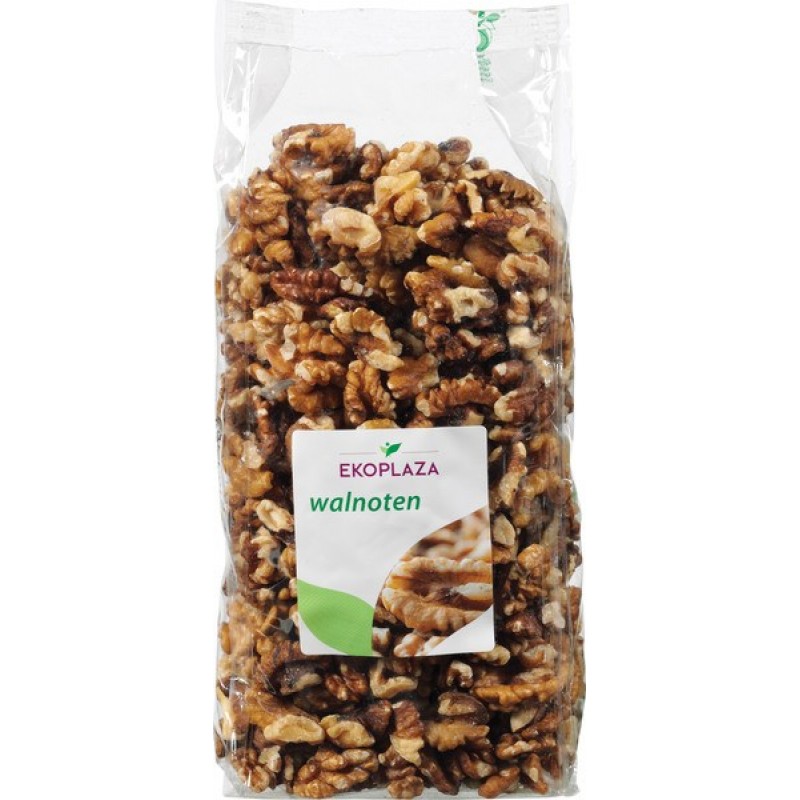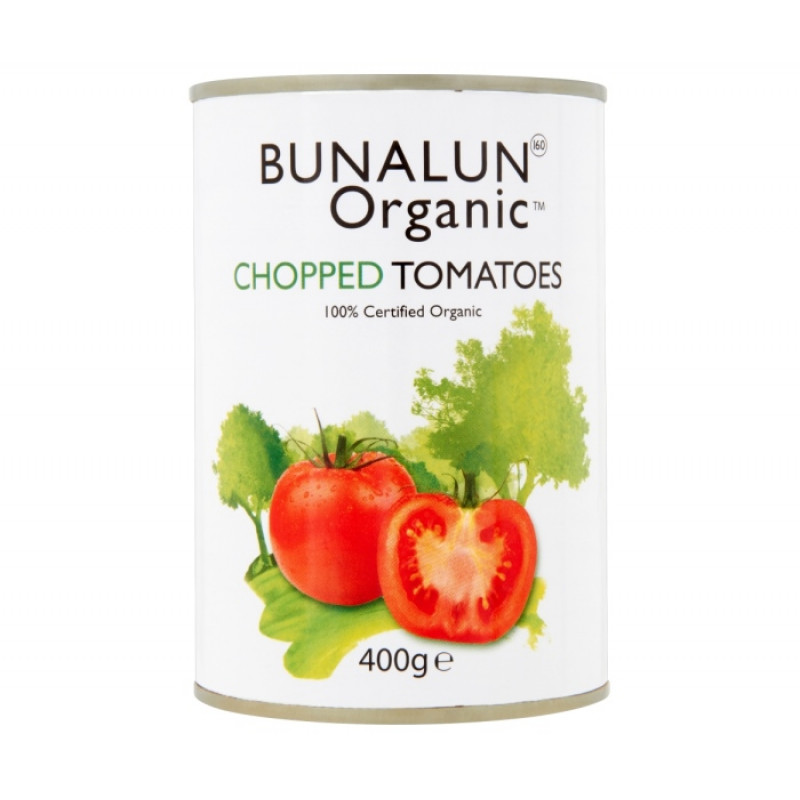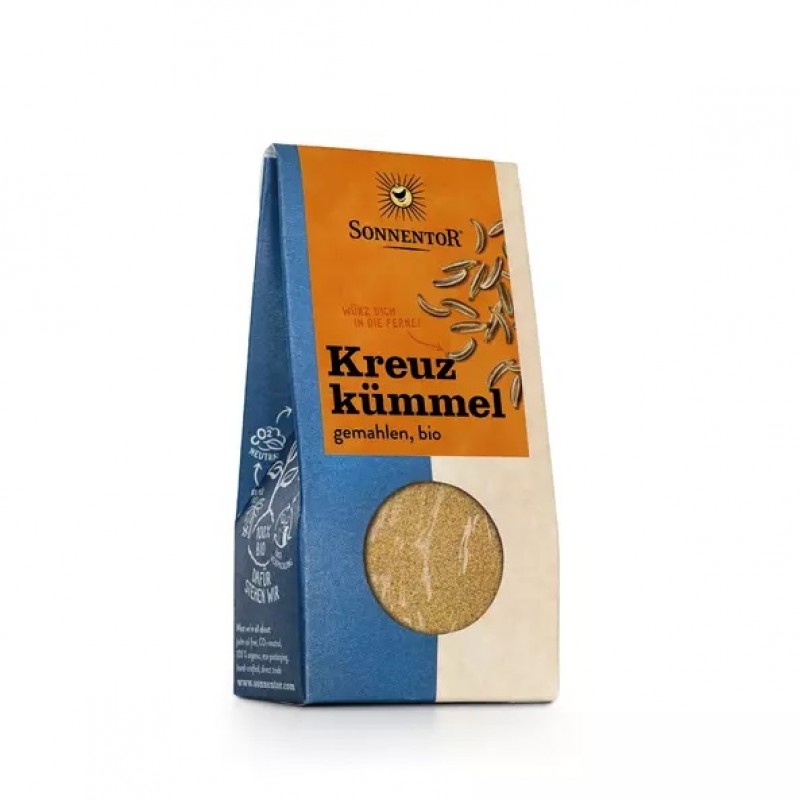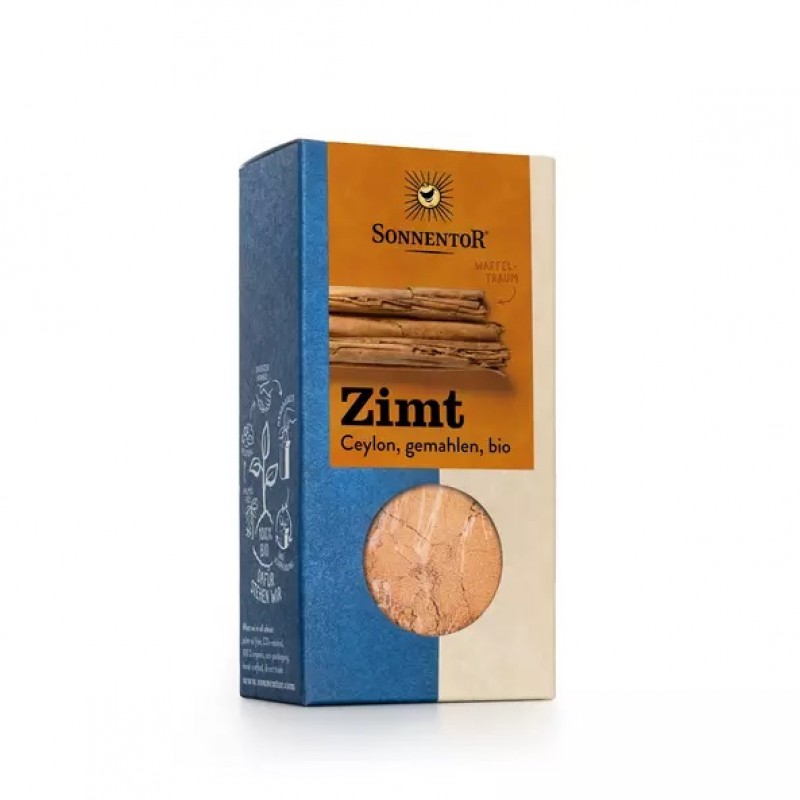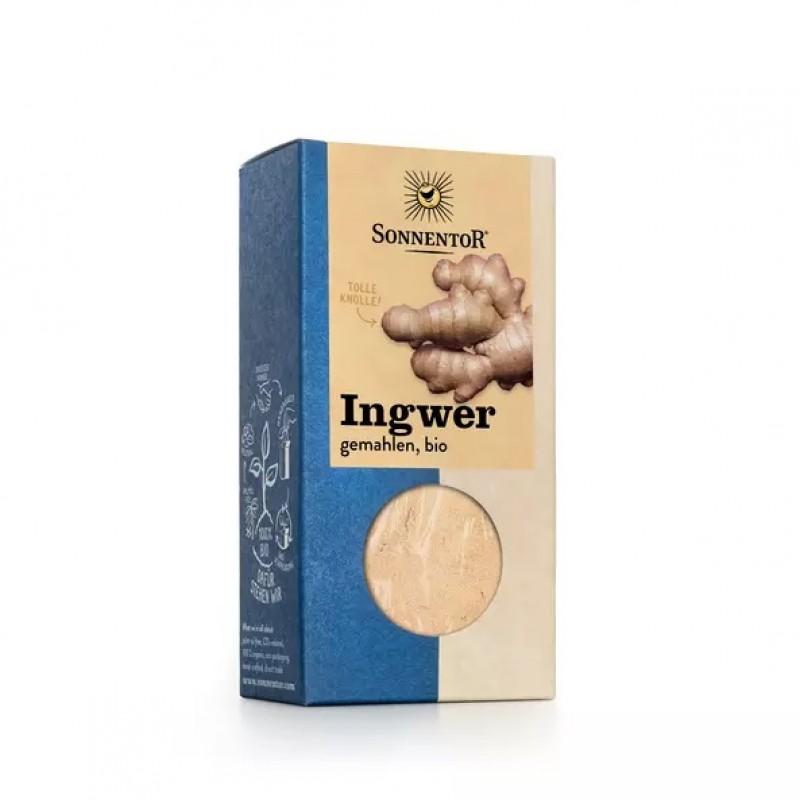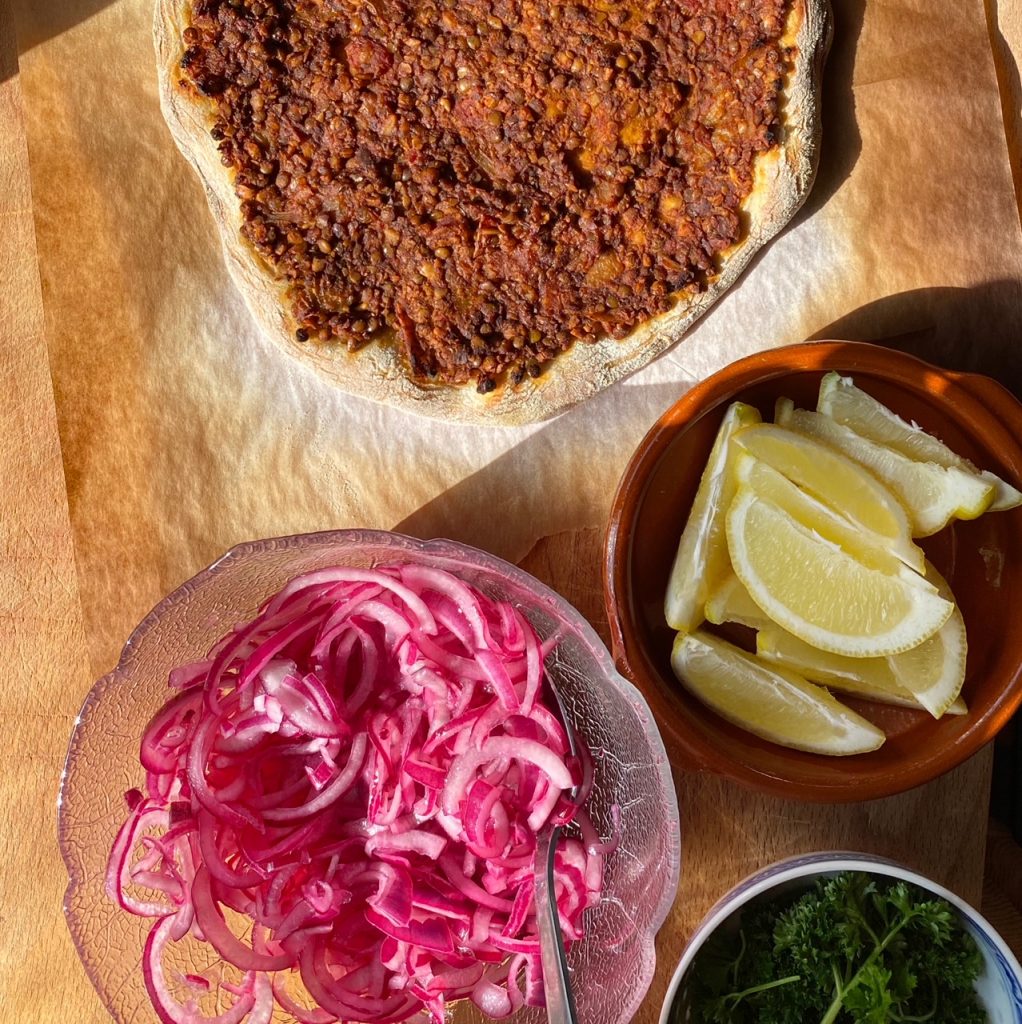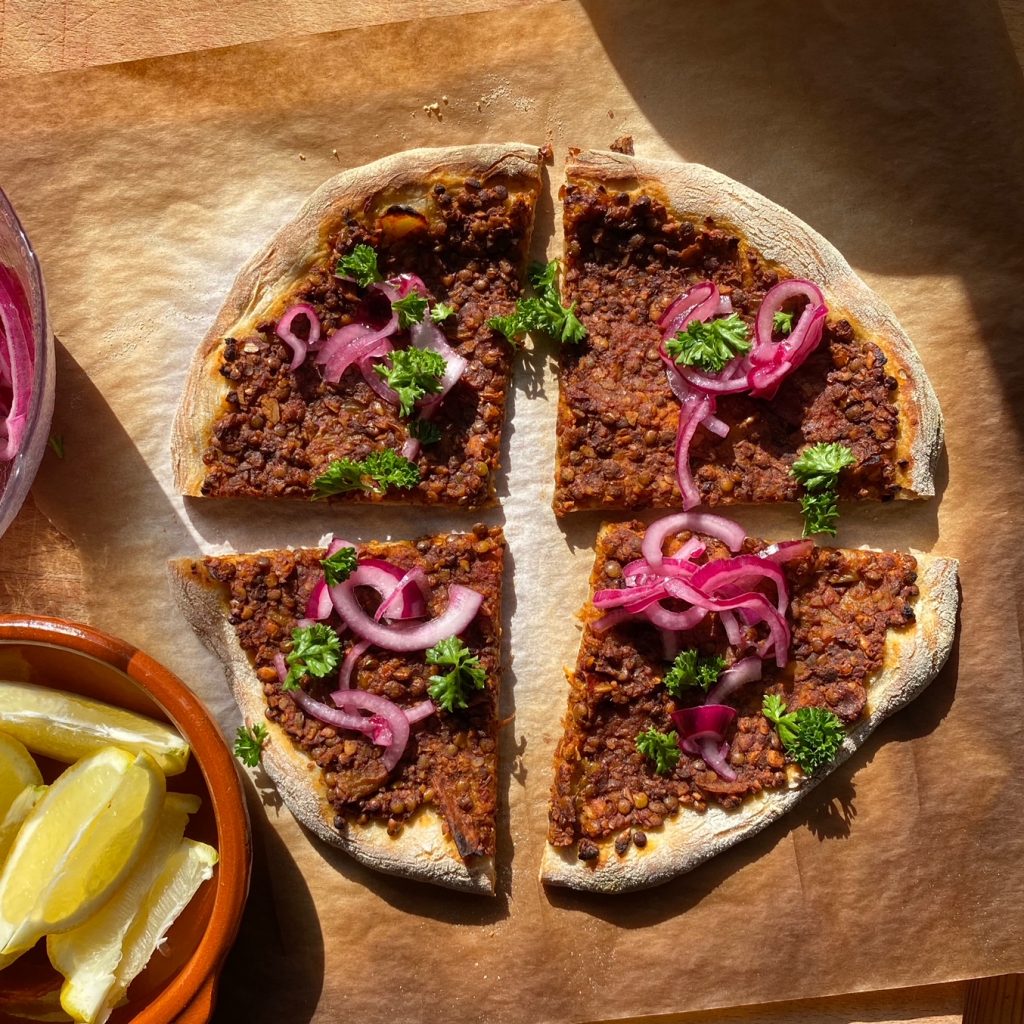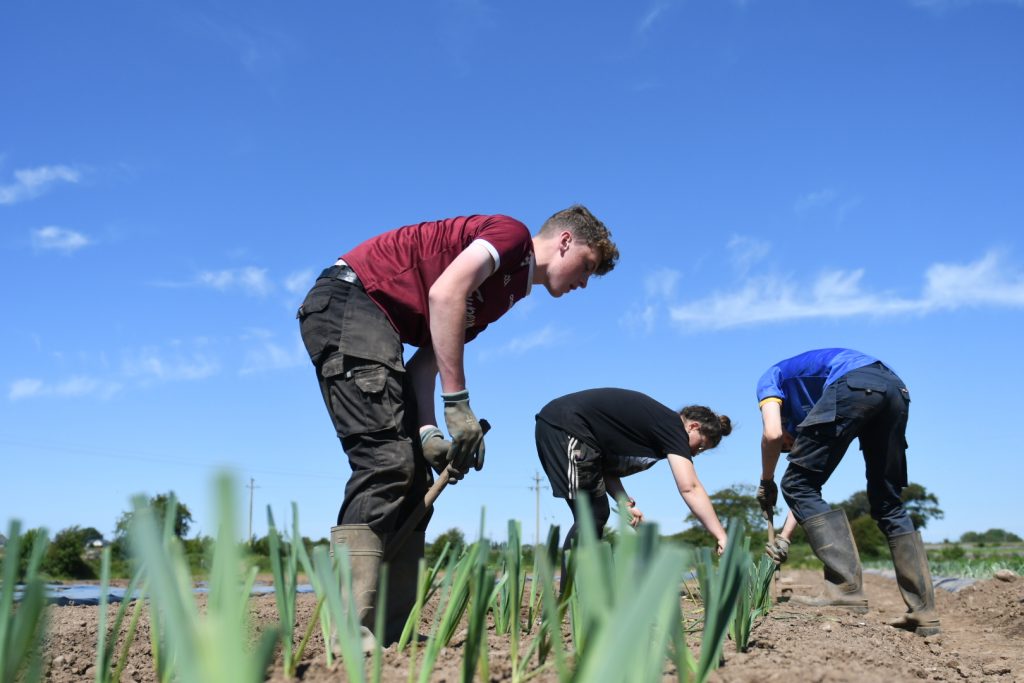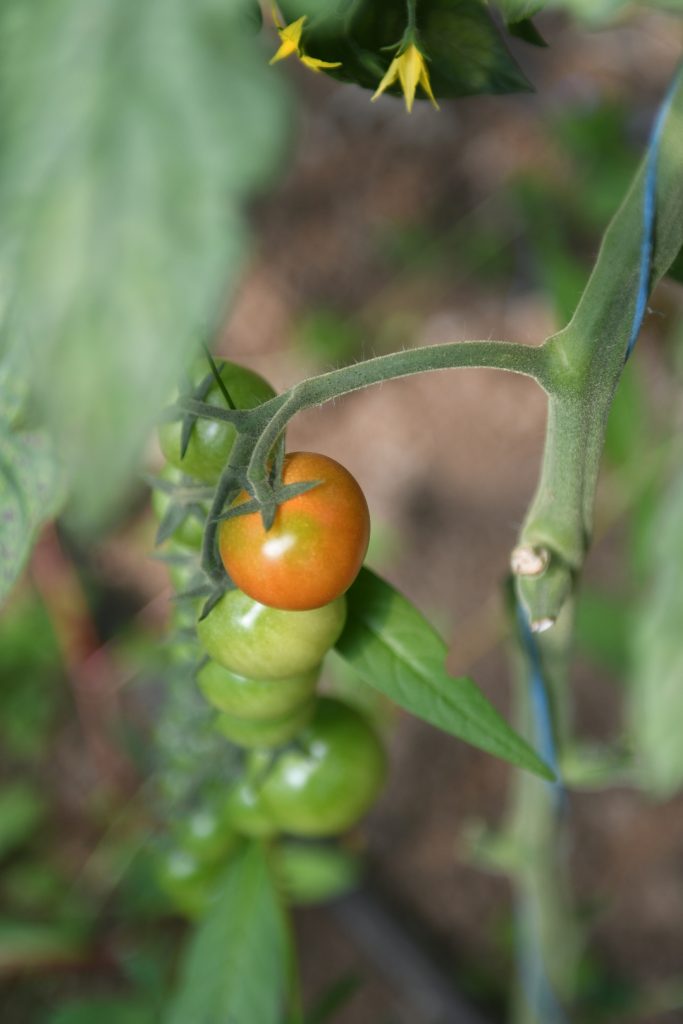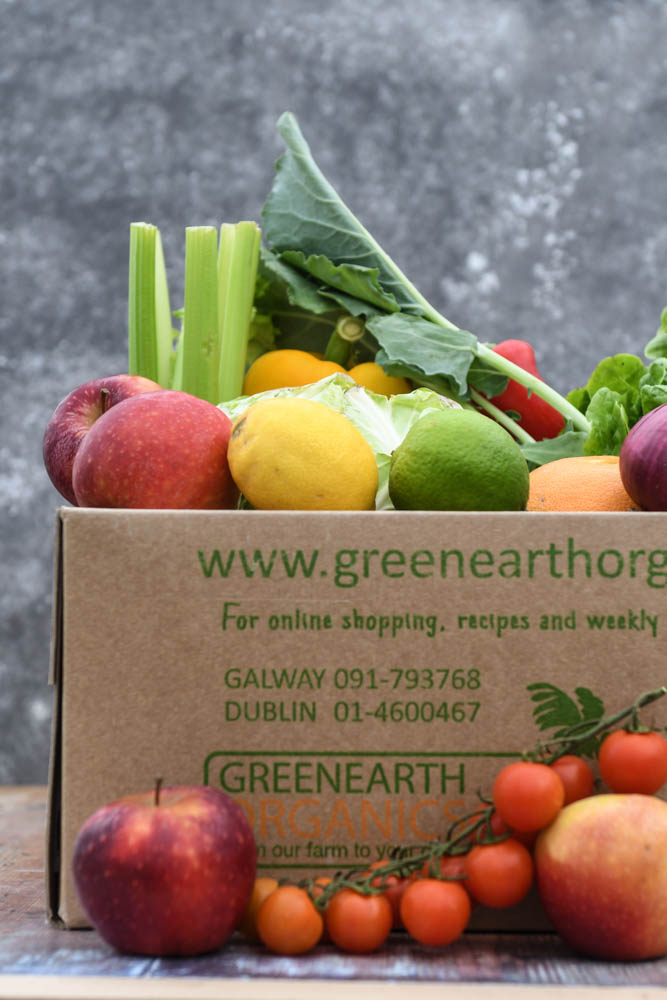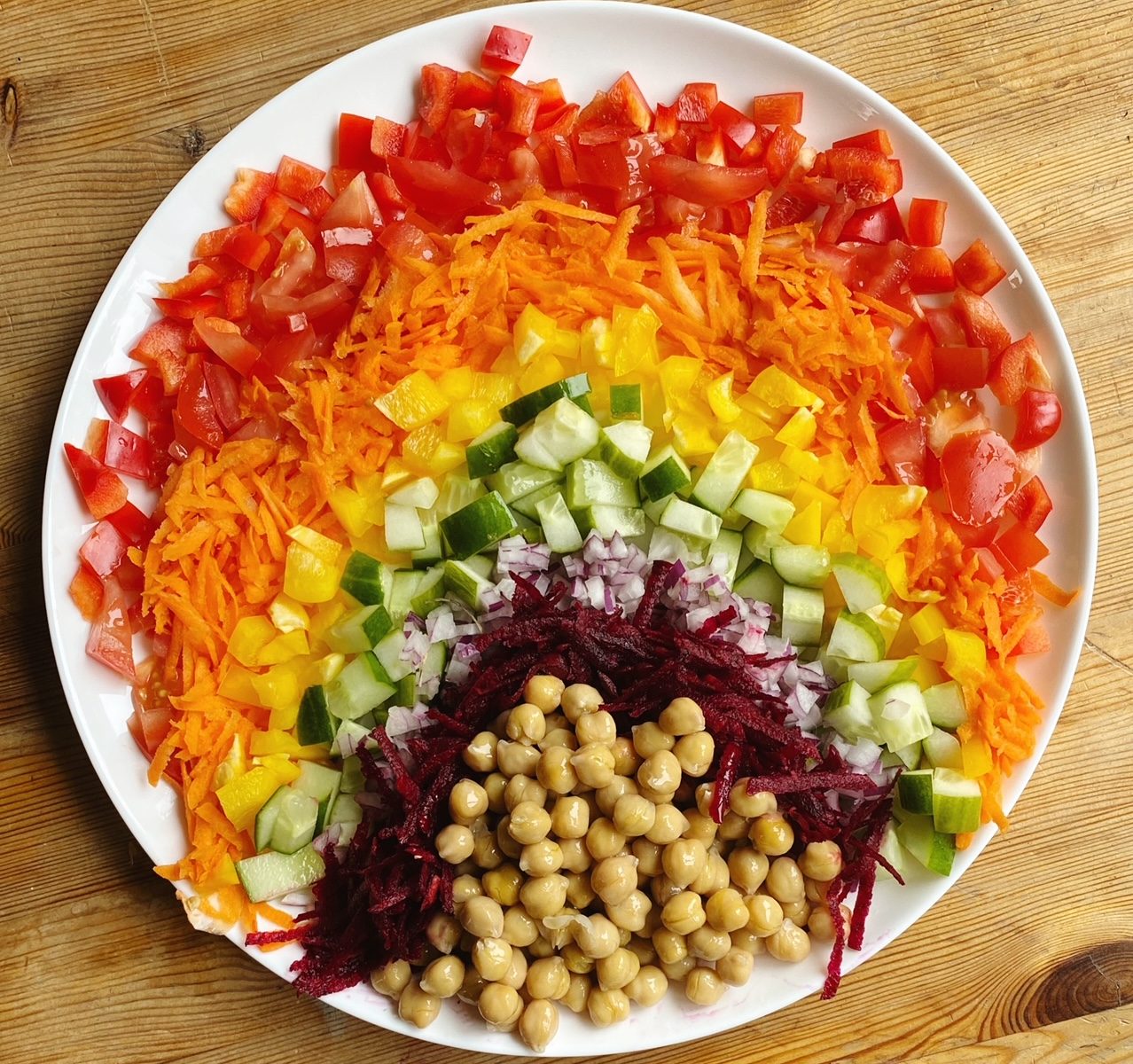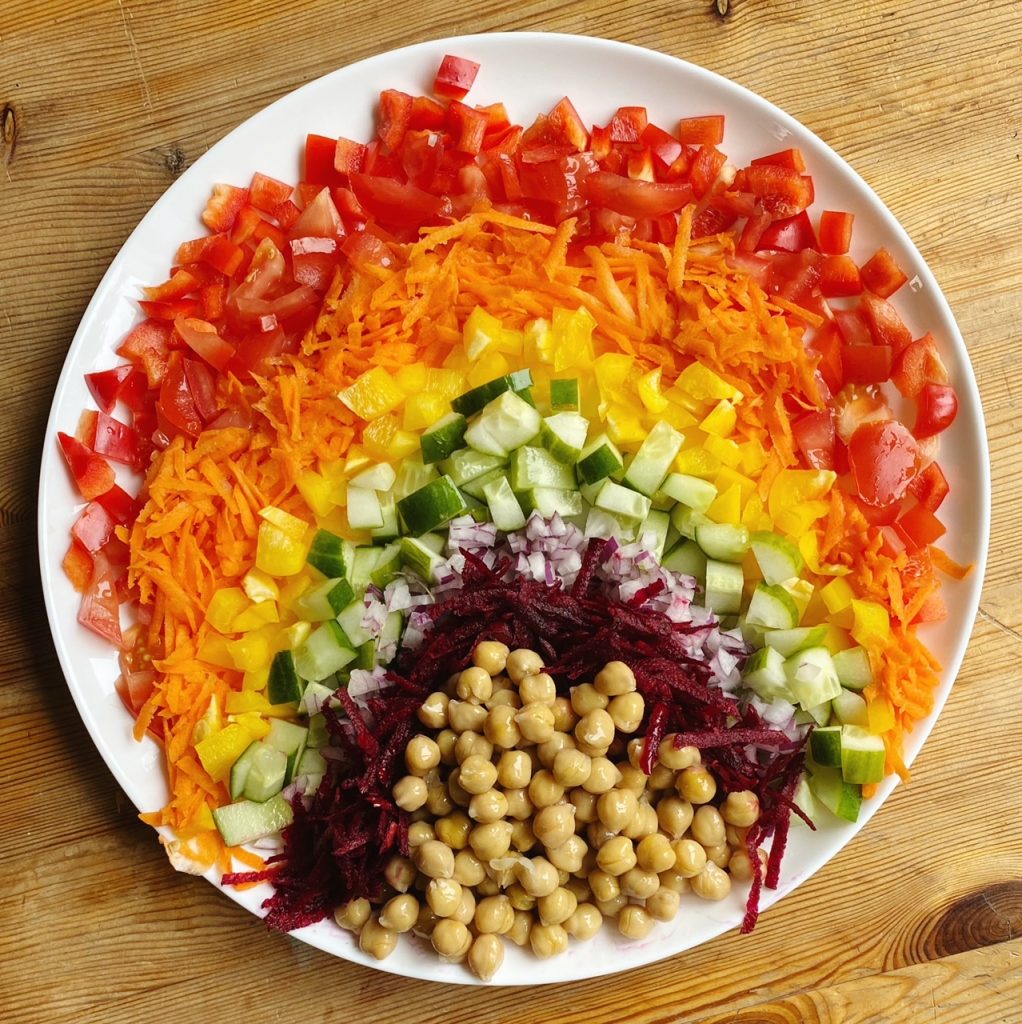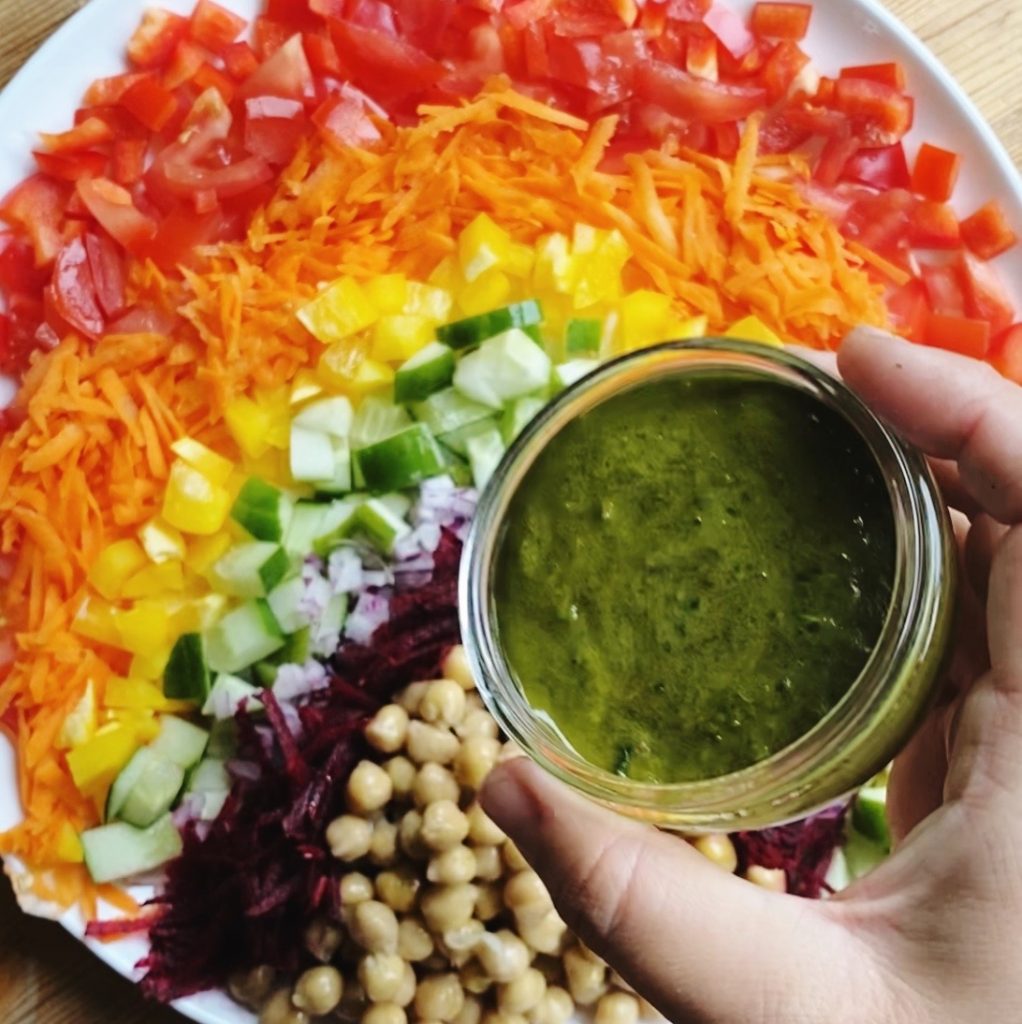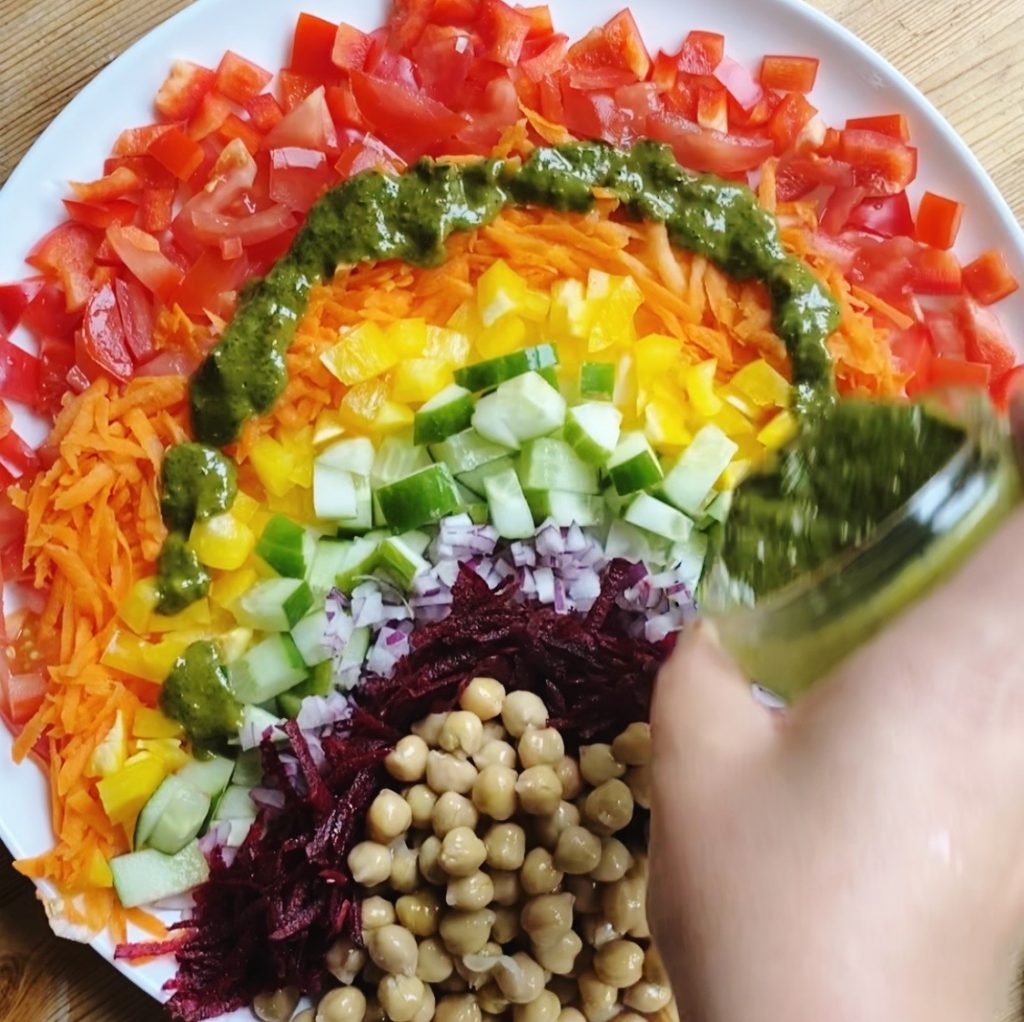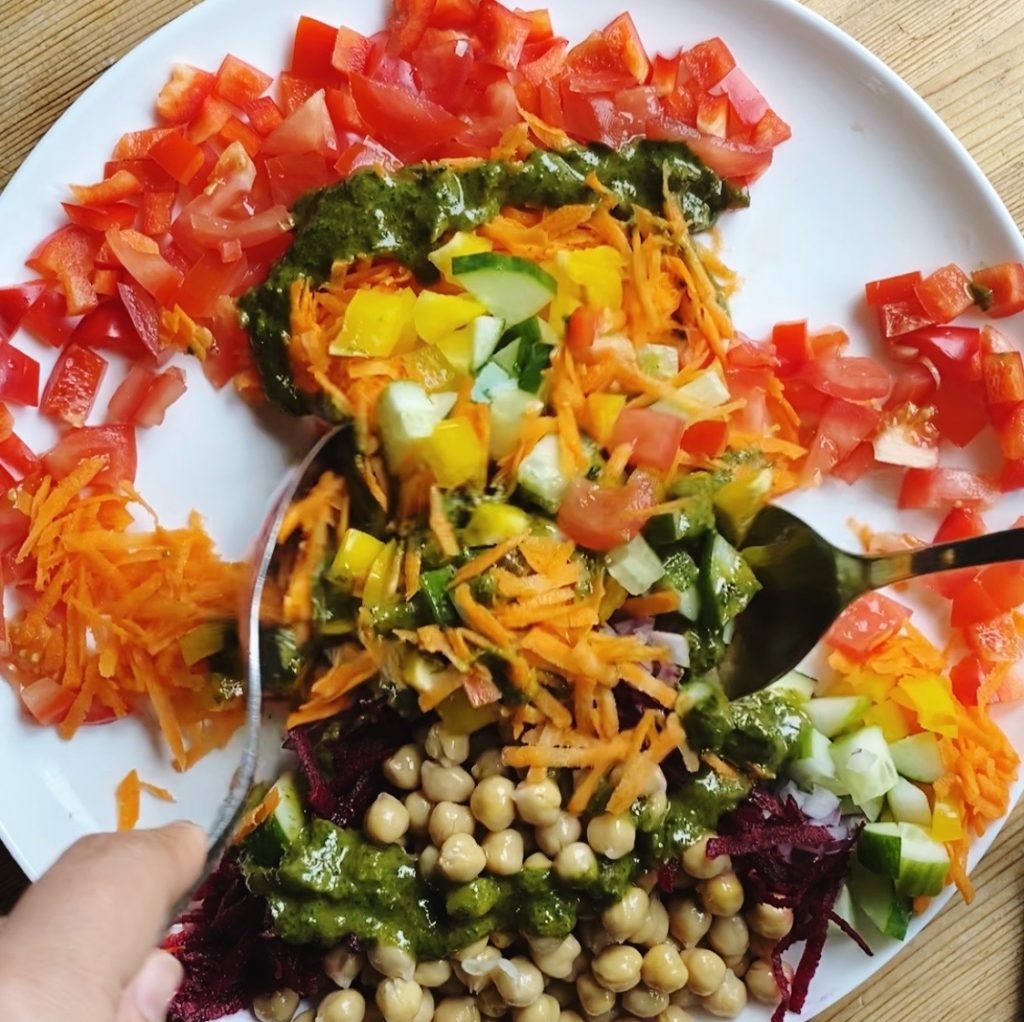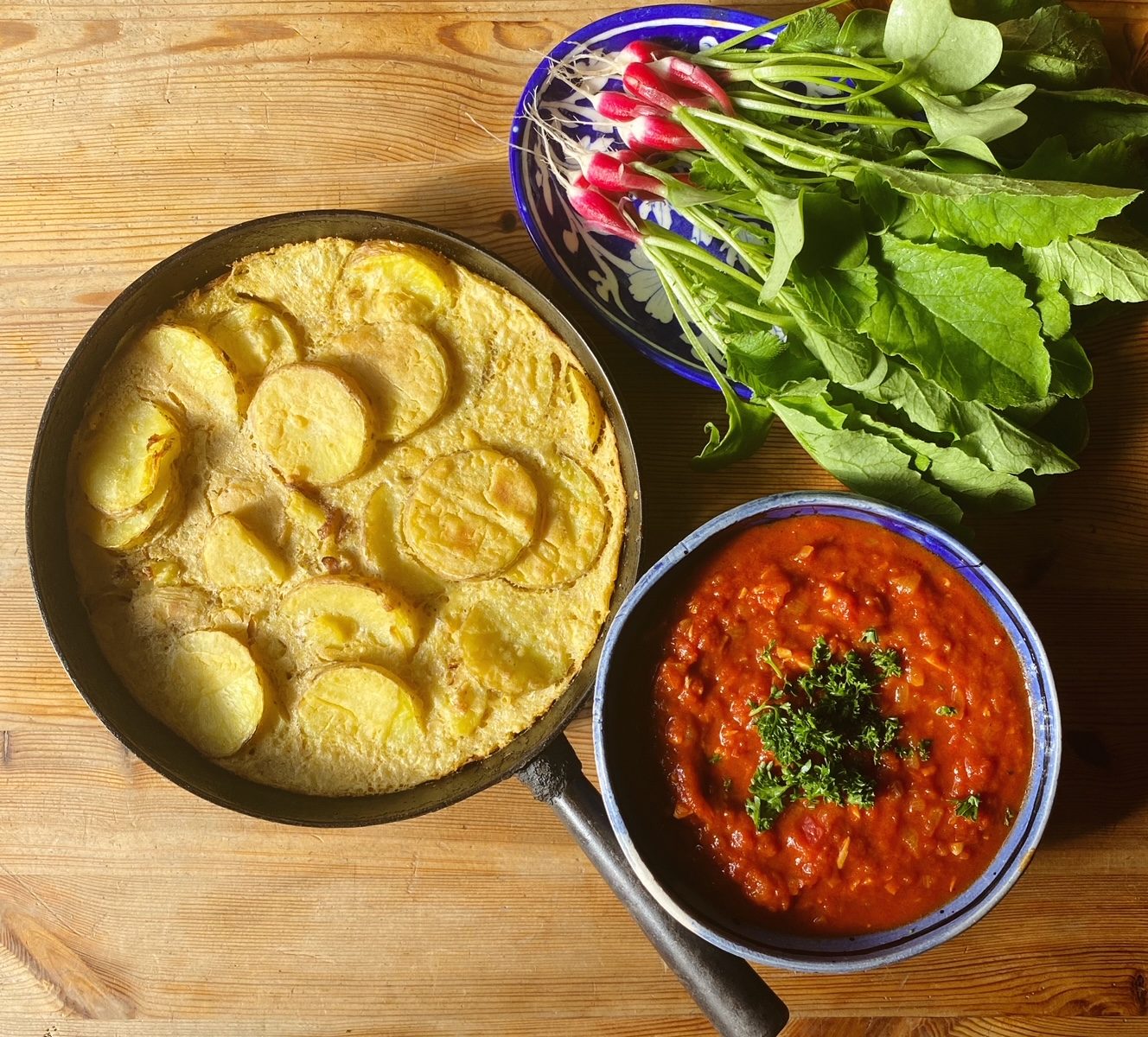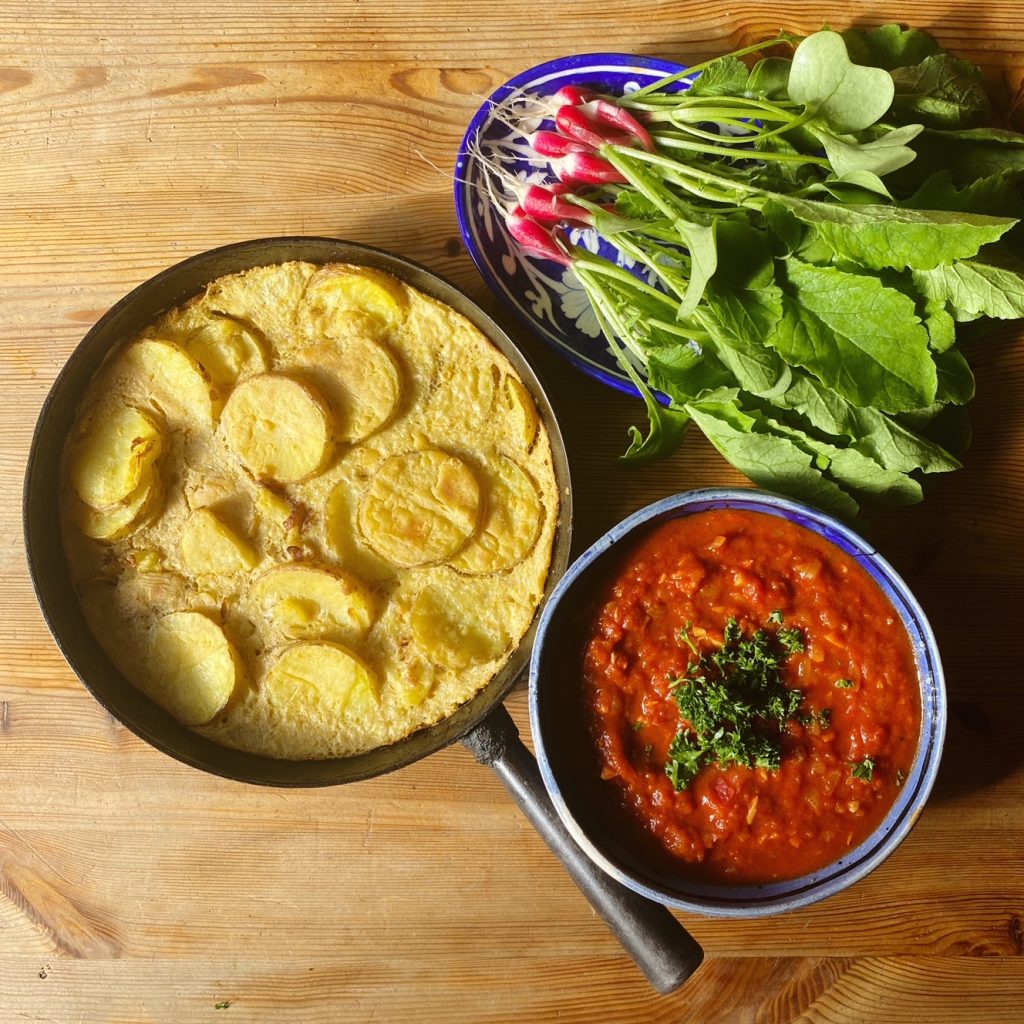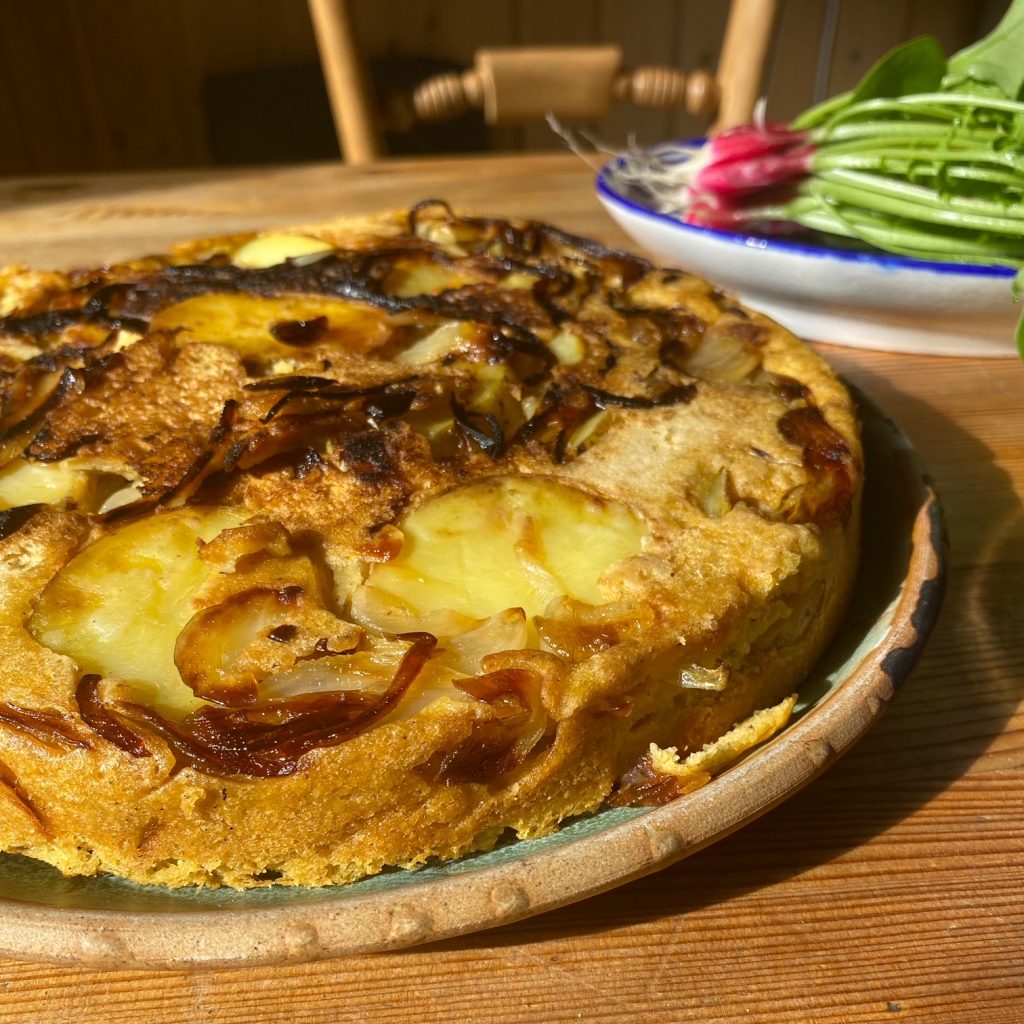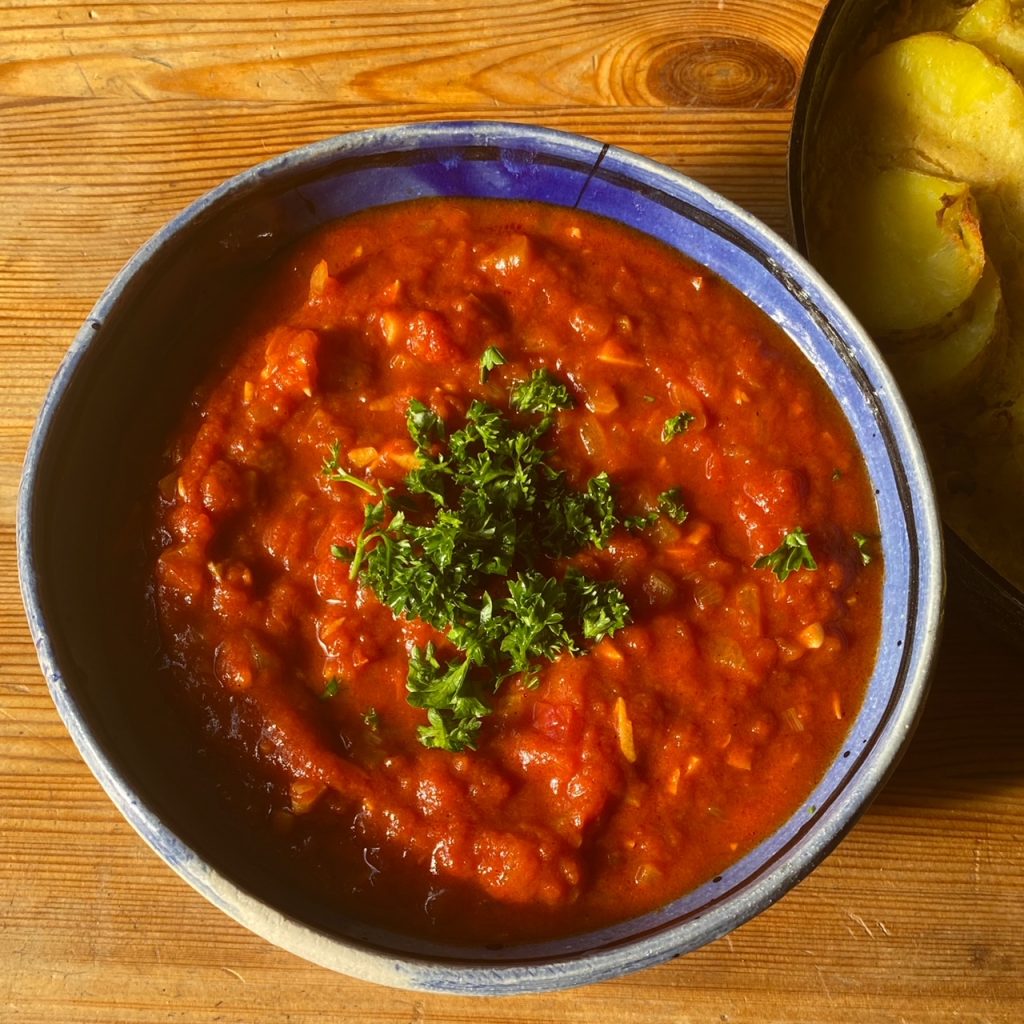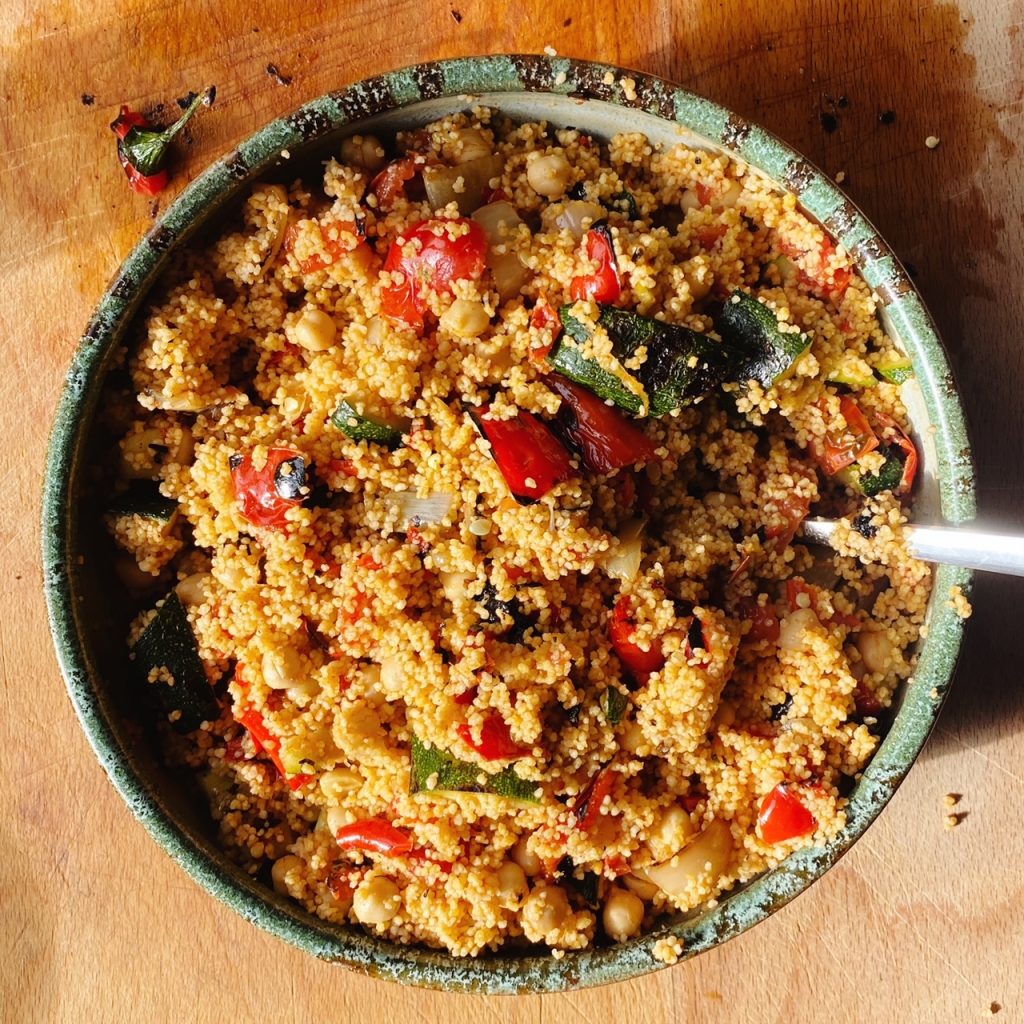
This is our new favourite way to serve barbecued vegetables right now. It’s quick and simple but so so delicious! Serve as a meal in it’s own right or as a side to your usual barbecued things and salads.
Did you know that we stock organic cous cous (and many more dry goods) in clever compostable bags? When you empty your cous cous into a storage jar, pop the bag into your home compost or your council compost bin and it will break down in 12 weeks. We have loads more than just fruit and vegetables on our website for you, and we deliver to every address in Ireland and Northern Ireland. Don’t forget to stay hydrated and find shade over this heatwave lovely people!
Liz x
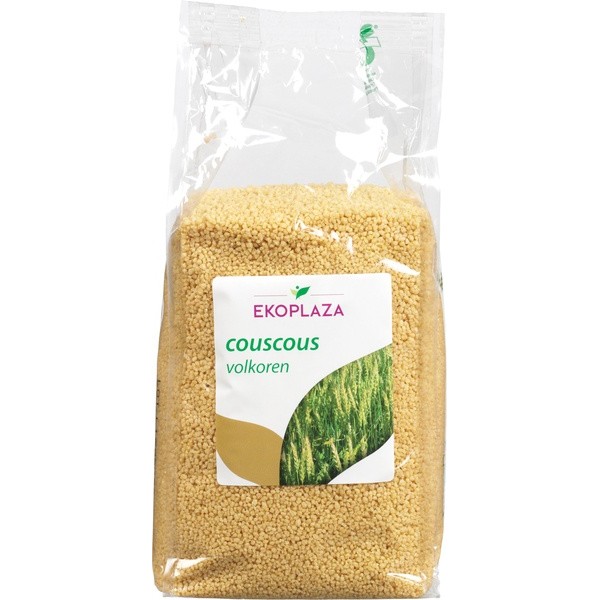
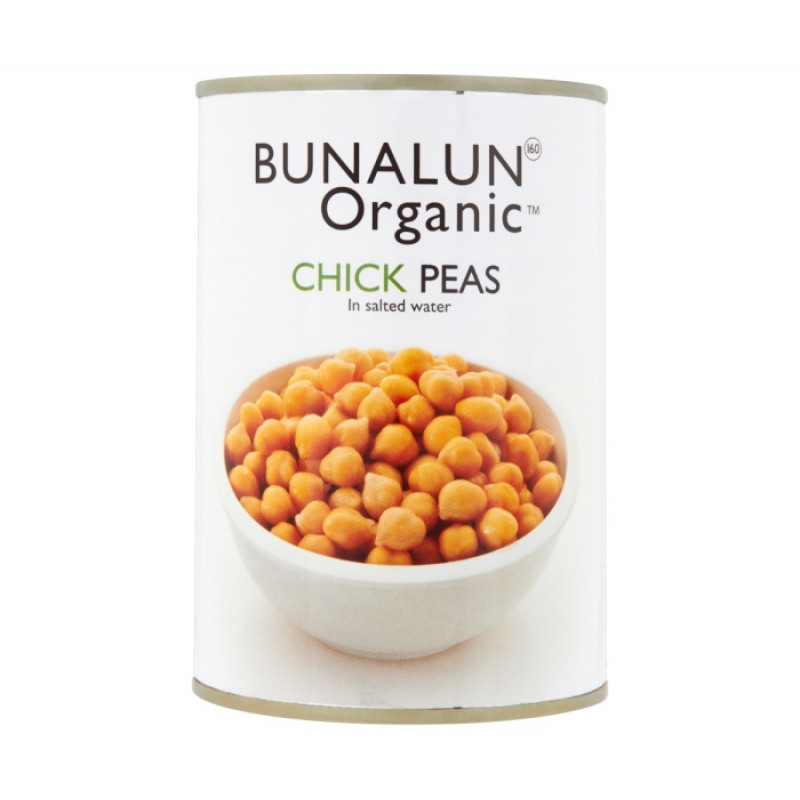
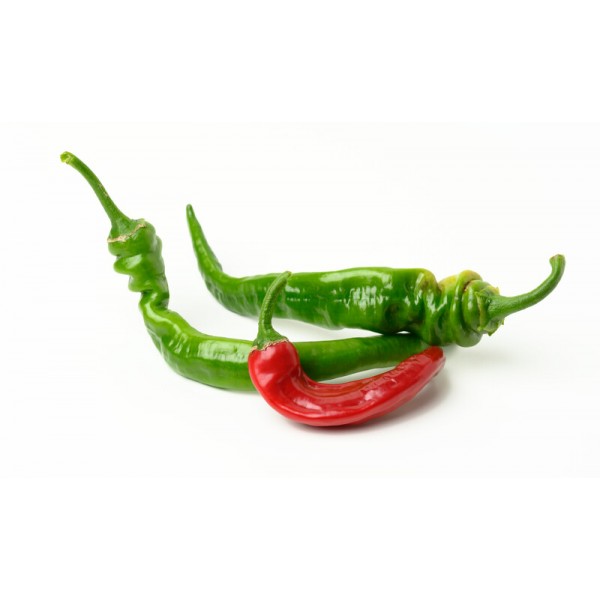
Ingredients (serves 6)
For the cous cous:
- 1 mug of cous cous
- 1 tin chickpeas, drained
- 1 tsp each: salt, pepper, ground cumin, smoked paprika, garlic granules (or season to your own taste)
- the juice of 1/2 a lemon
- 2 tbsp olive oil
- 1 & 1/4 mugs boiling water
For the barbecued vegetables:
- 1 courgette
- 2 red peppers
- 2 onions
- 1 fresh chilli
- 10 cherry tomatoes
- 2 tbsp olive oil
- salt and pepper to taste
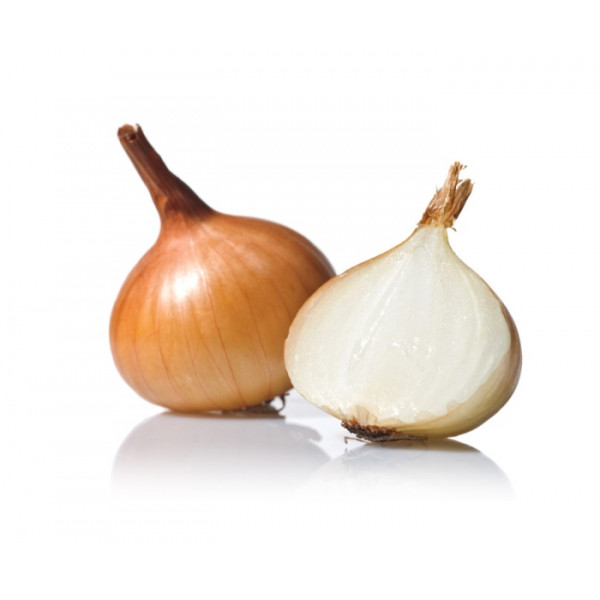
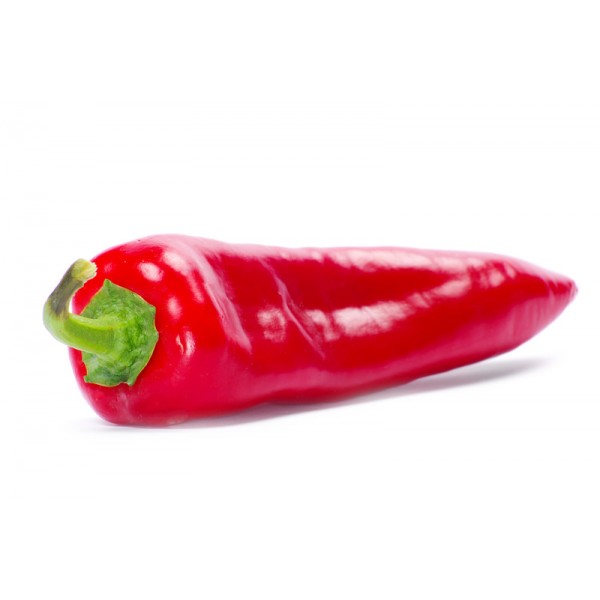
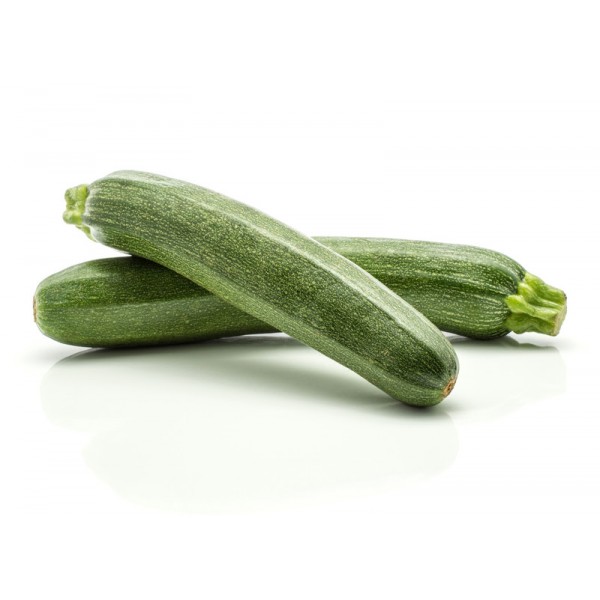
Method
- Light the barbecue and prepare the vegetables for grilling. Cut the courgette into large chunks and the peppers in half and remove stems and seeds. Cut the onions in half and remove the skin. Keep the tomatoes and chilli whole. Place the vegetables in a bowl, drizzle with the oil and sprinkle with salt and pepper. Keep aside in the bowl until the barbecue coals are ready.
- Meanwhile prepare the cous cous. Measure the cous cous into a large, heat proof salad bowl. Add the chickpeas, seasoning, lemon juice and olive oil. Add the just-boiled water and stir to combine then place a large plate over the bowl and let the cous cous absorb the water for 5 minutes.
- Remove the plate and fluff up the cous cous with a fork. The barbecue coals should be ready to get grilling now.
- Cook the vegetables on the barbecue until they are beautifully blackened and soft. As they become ready, use tongs and place them back into the bowl. When they are all cooked through, smokey and delicious, tip onto a large chopping board and chop into bite sized pieces. Scrape the barbecued vegetables, along with all their juices into the bowl of cous cous and stir.
- Serve with salad and sauces or with your other usual barbecue items. Enjoy!
